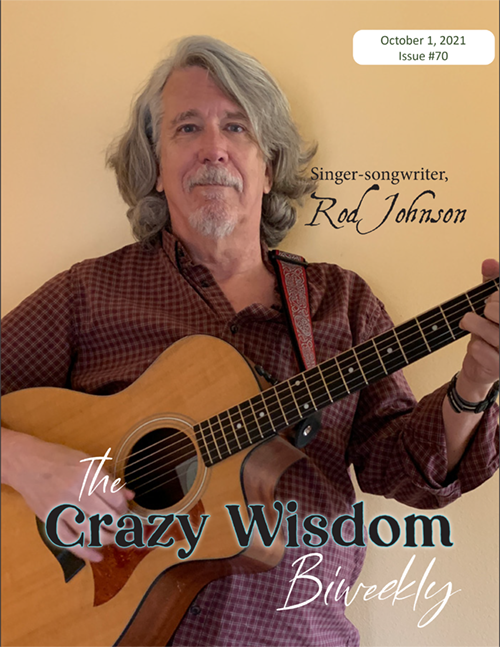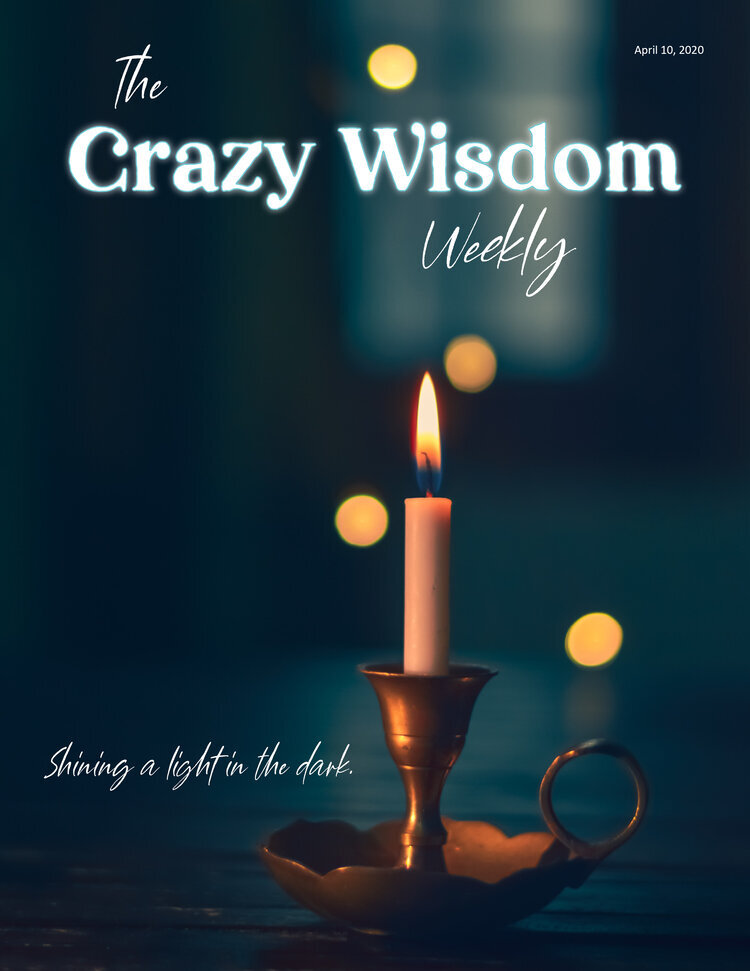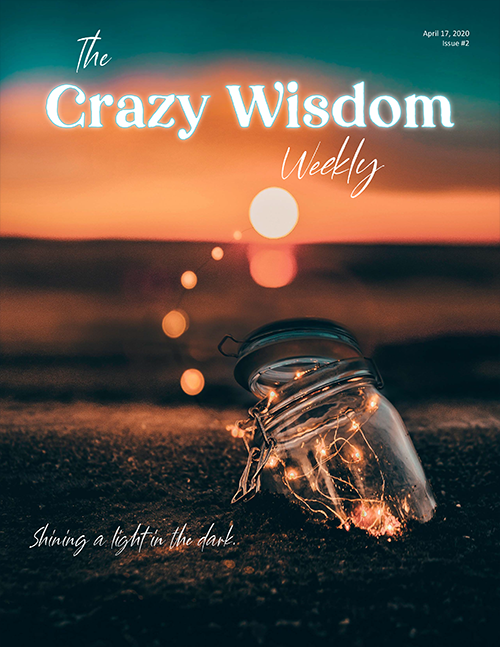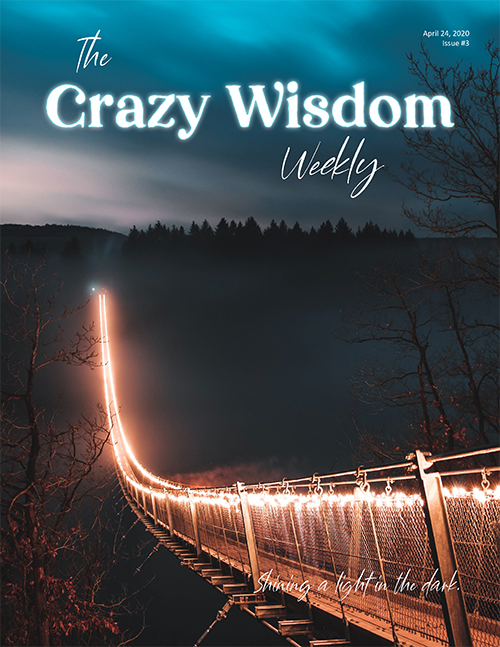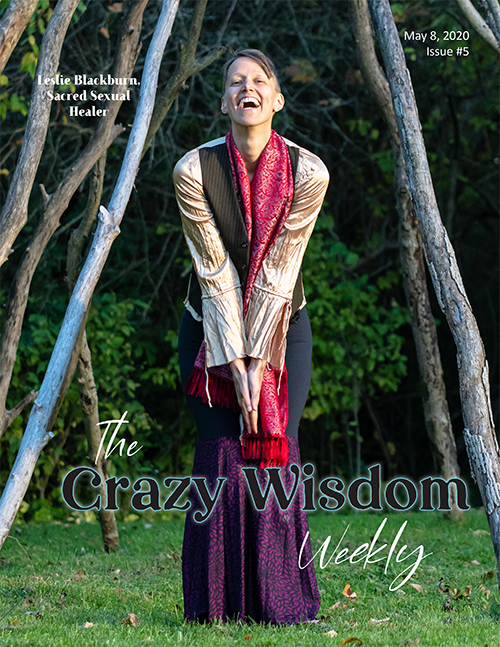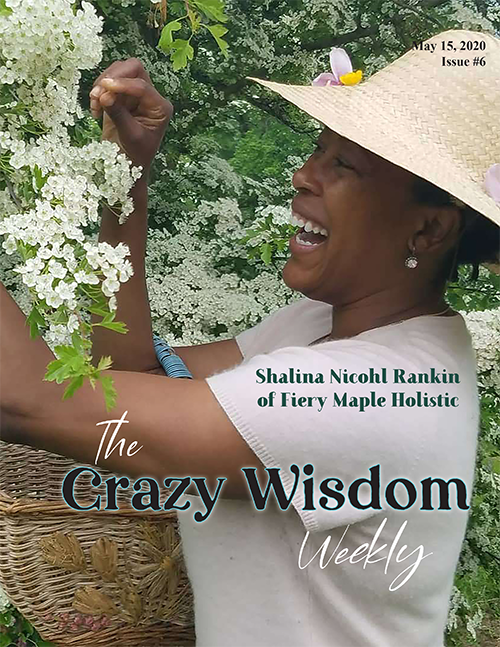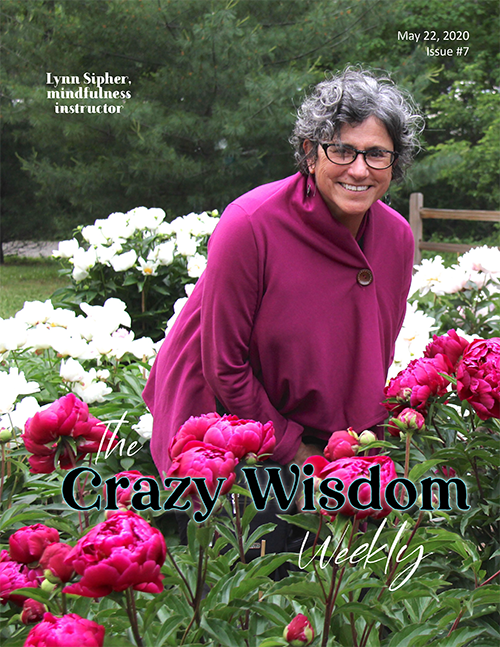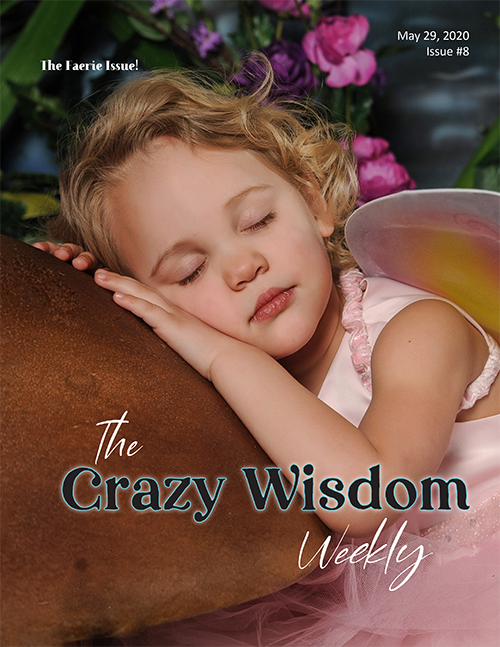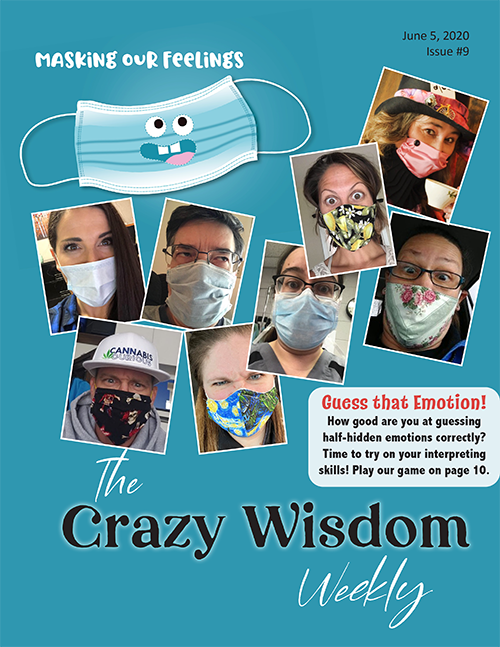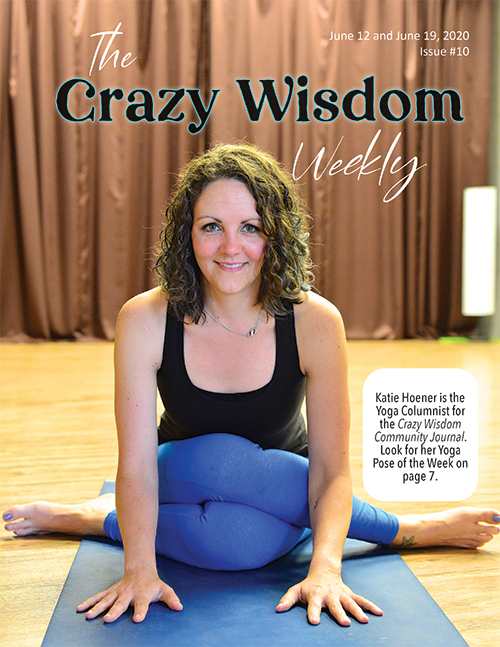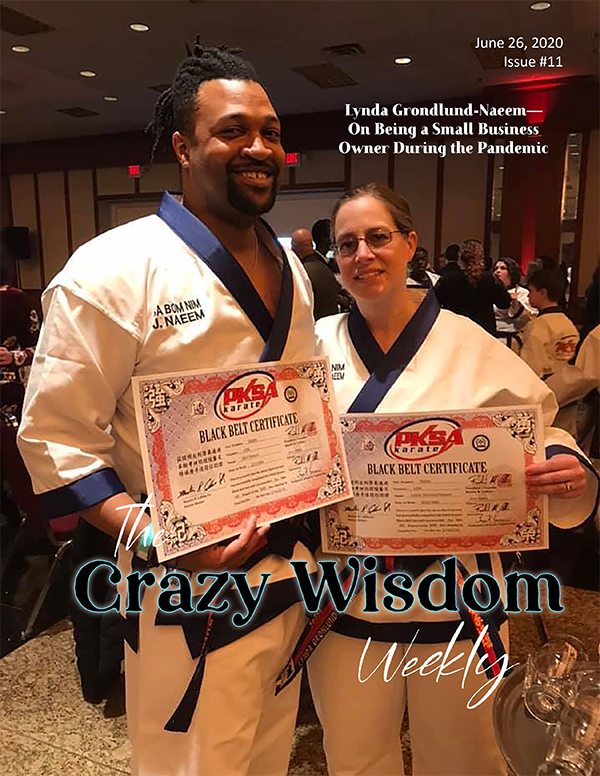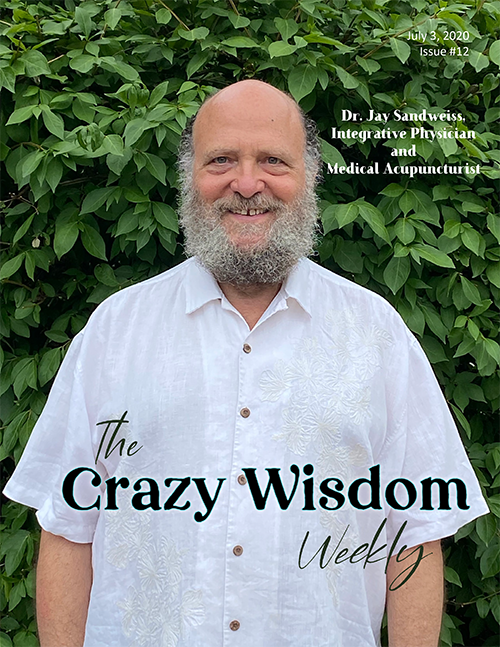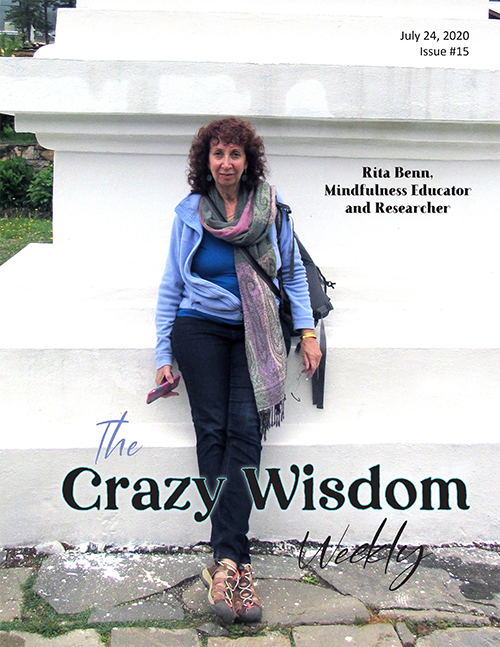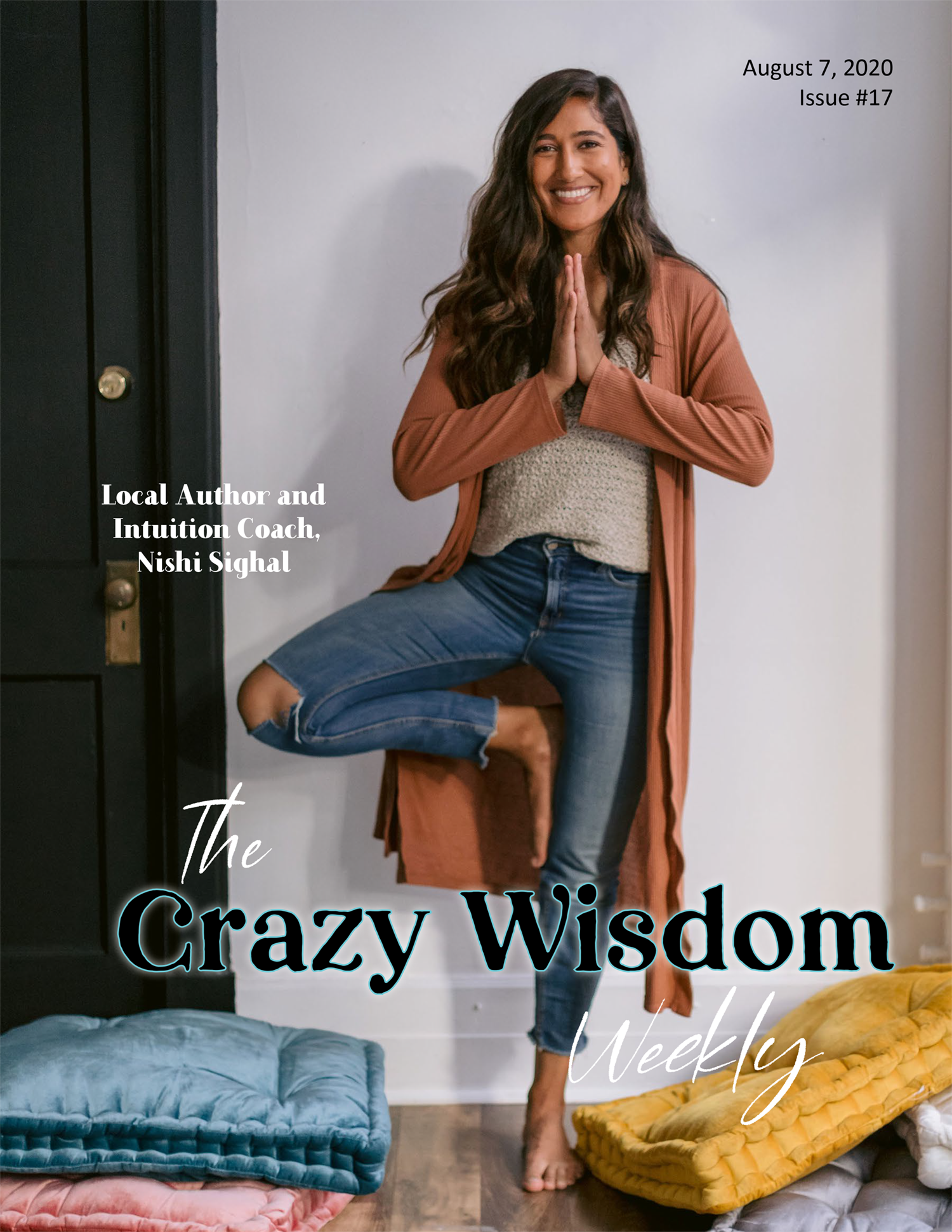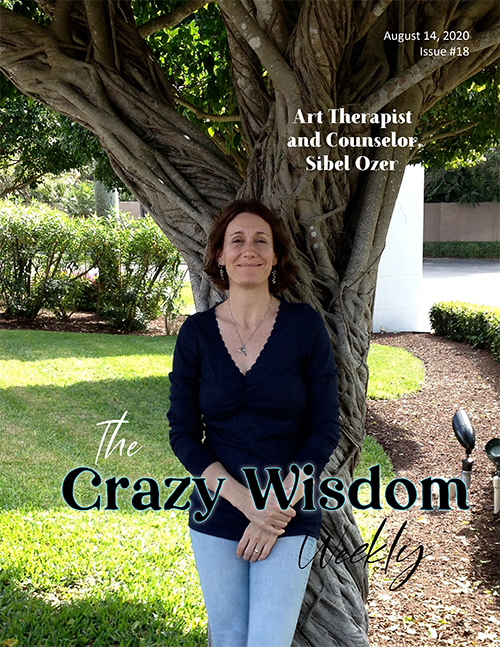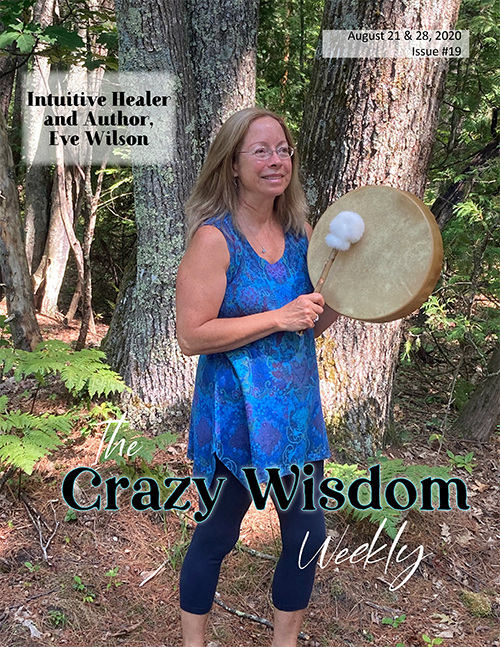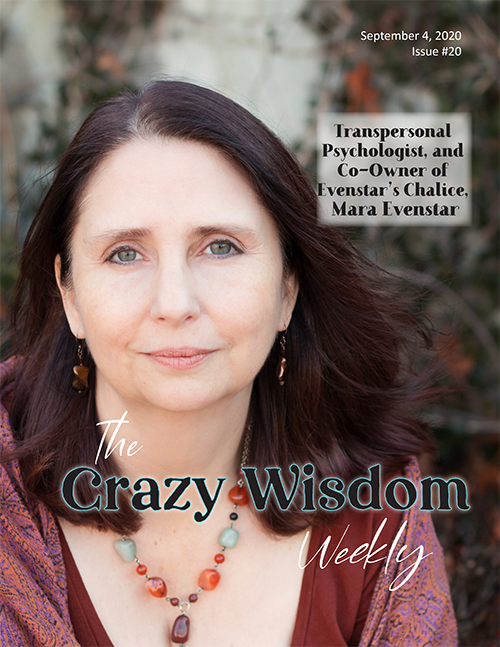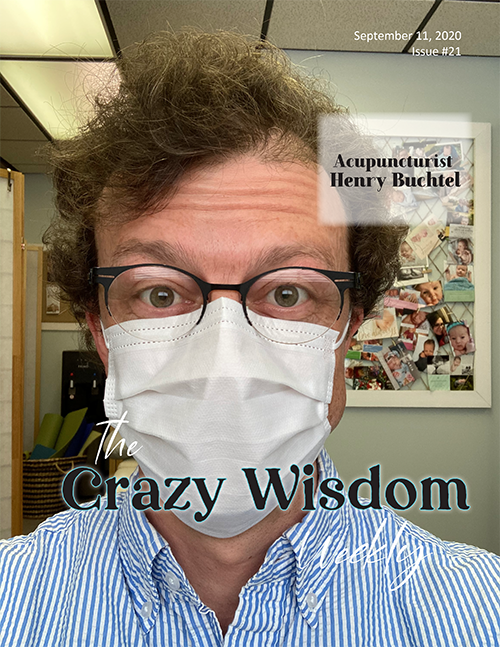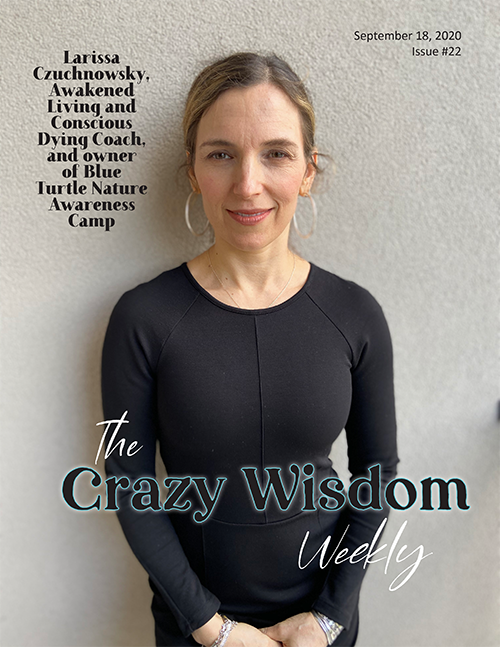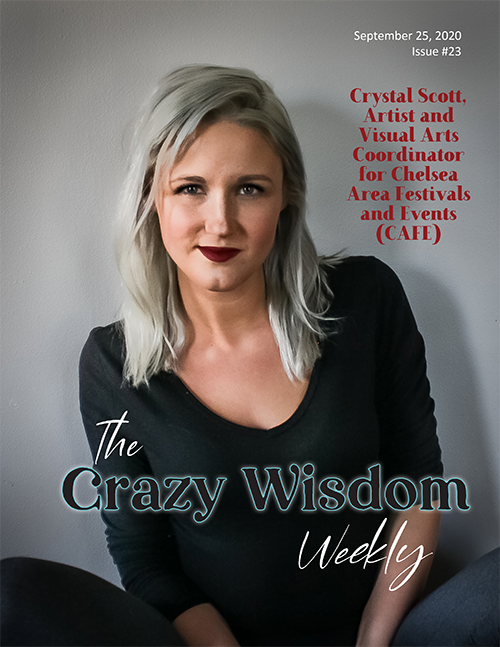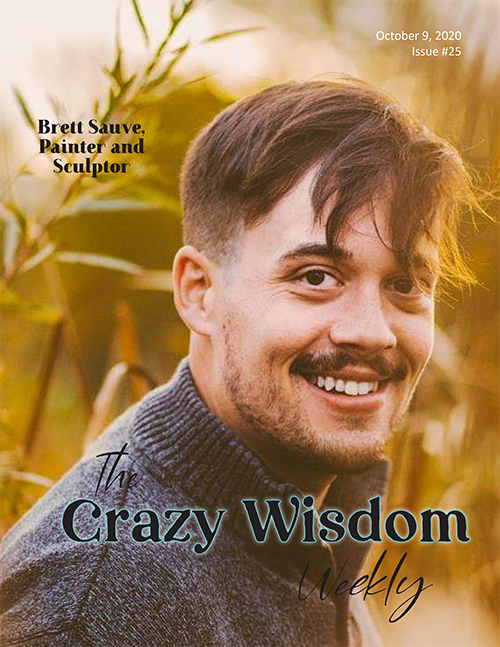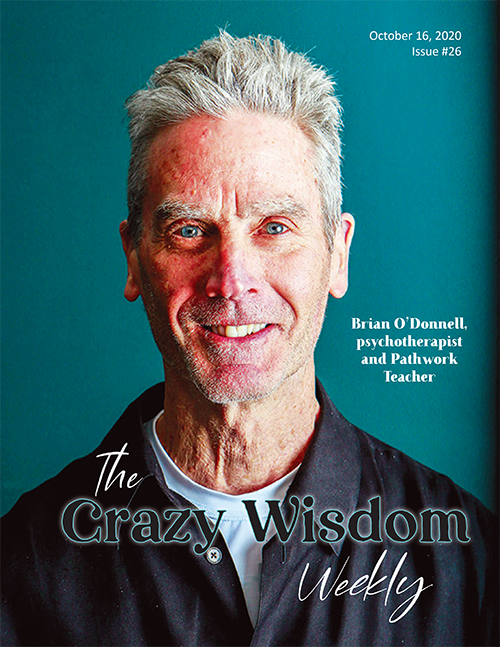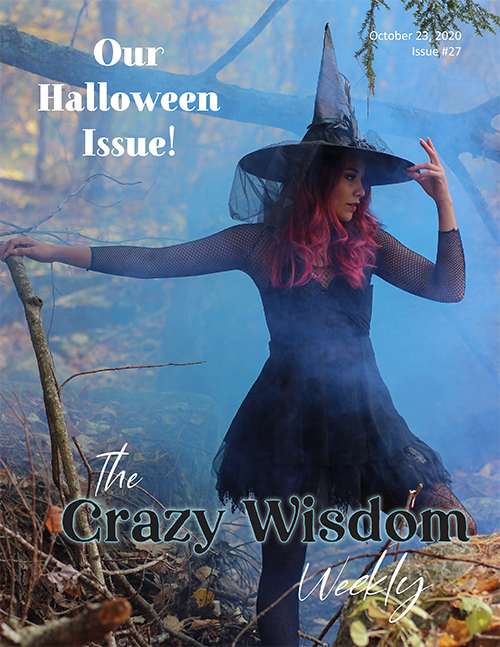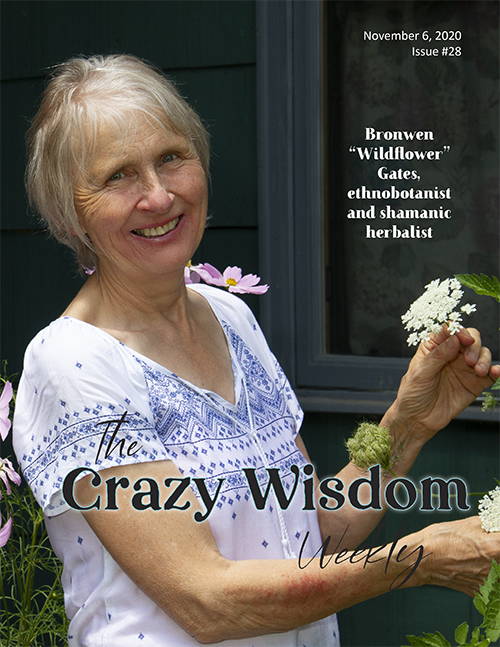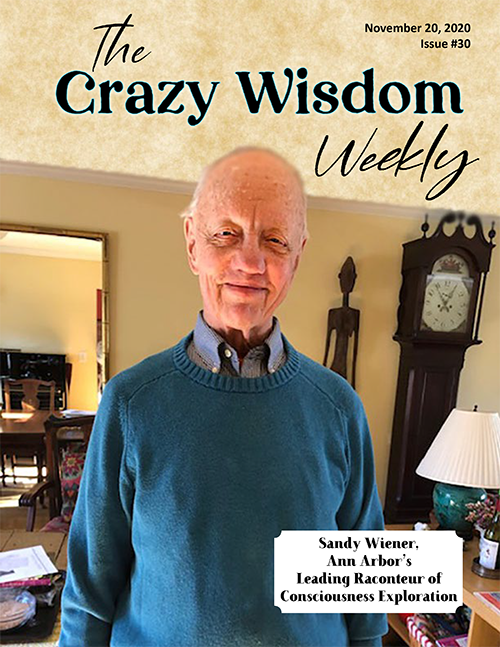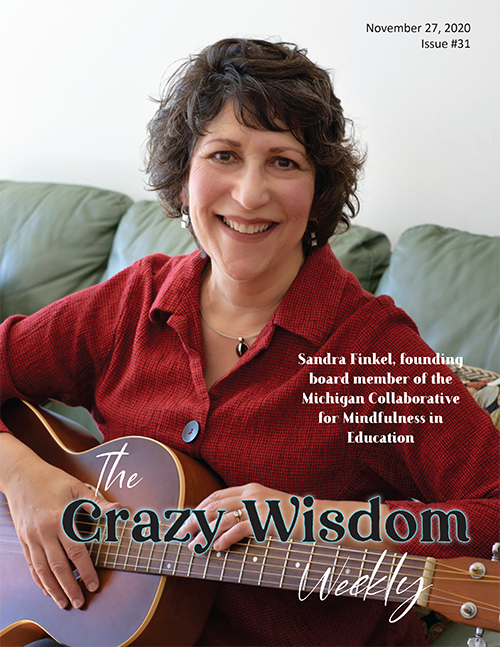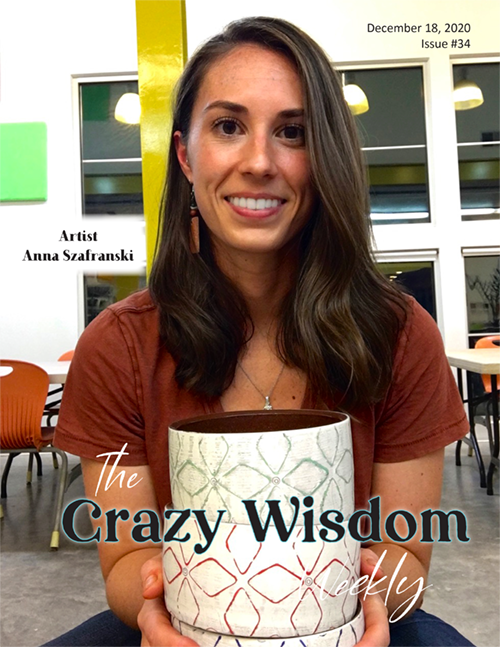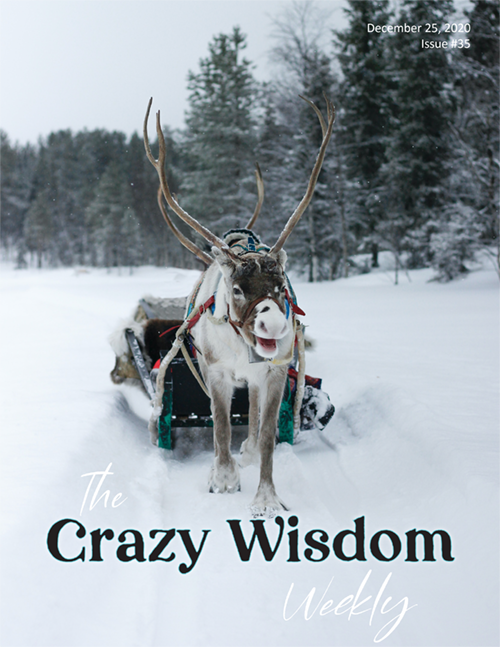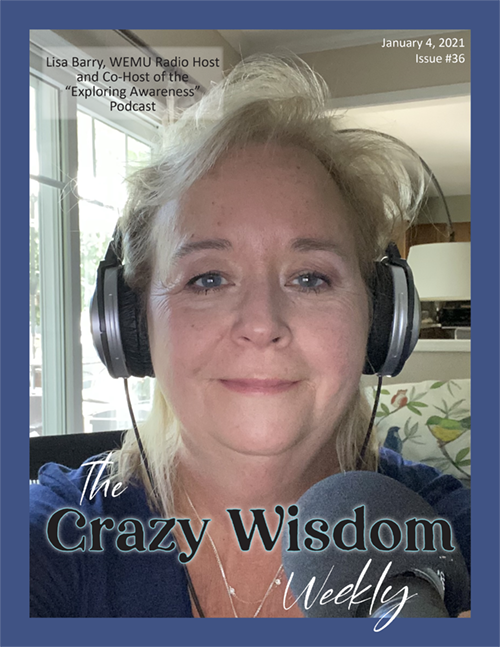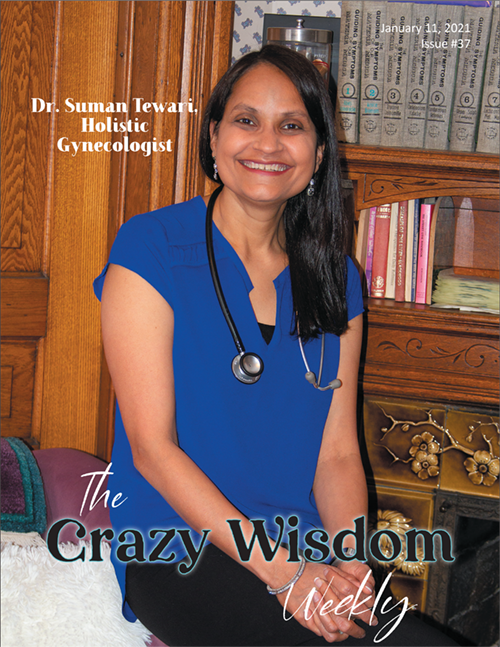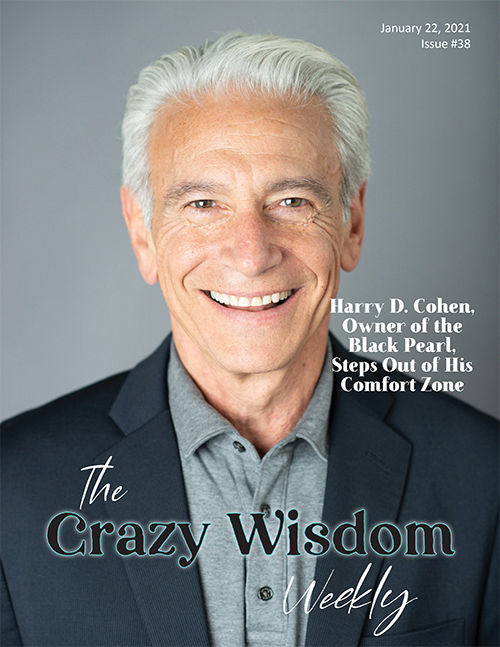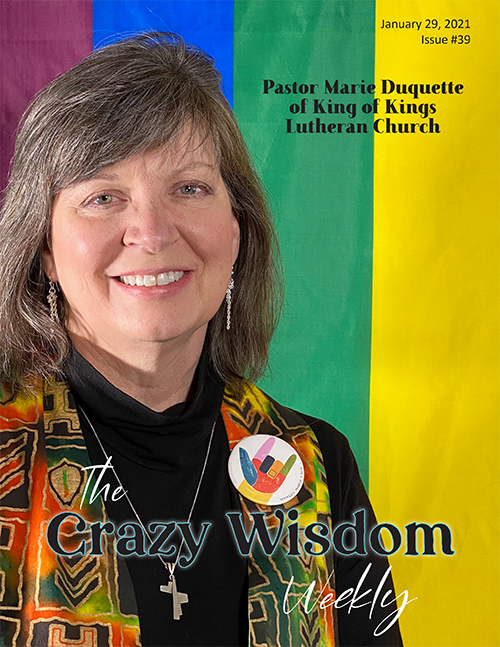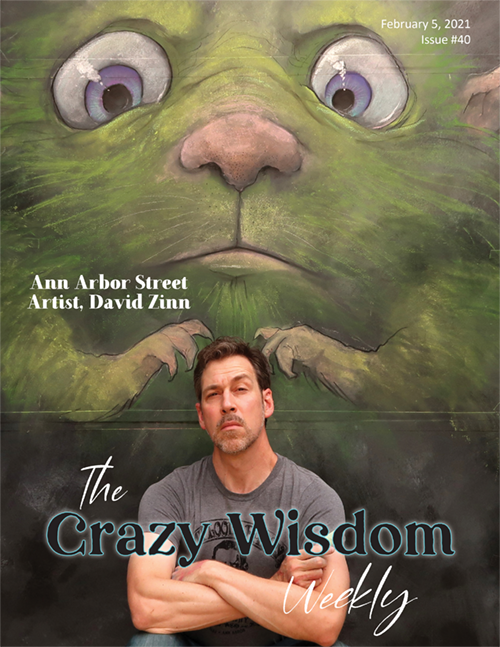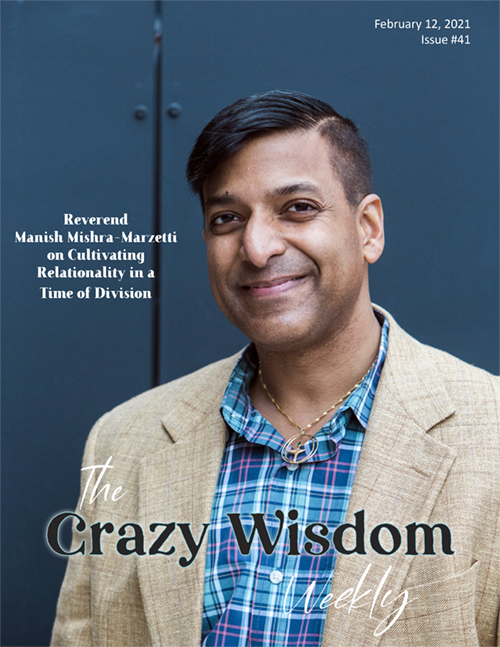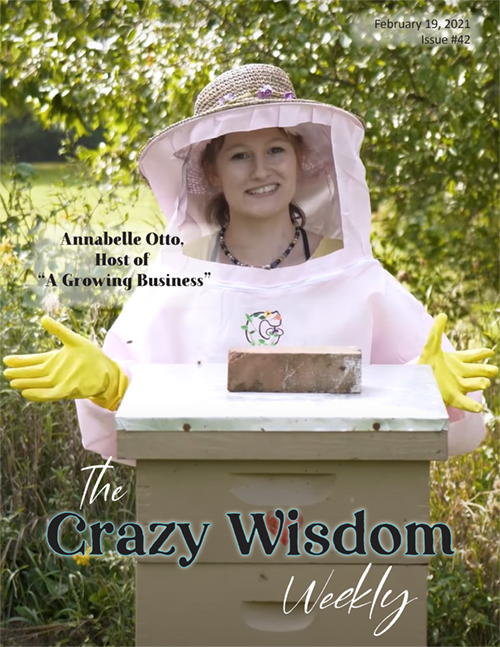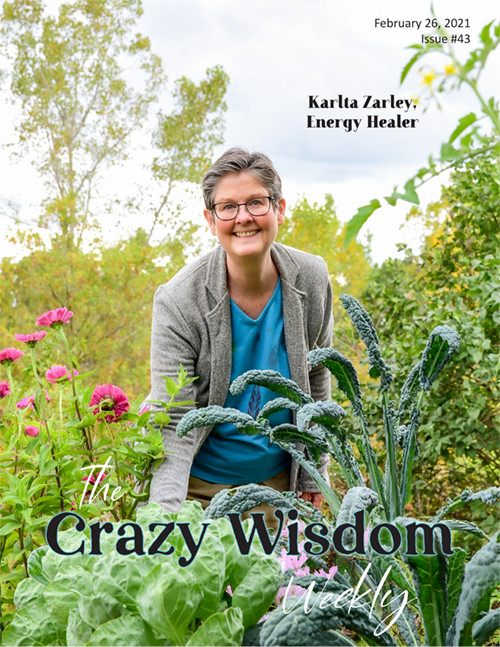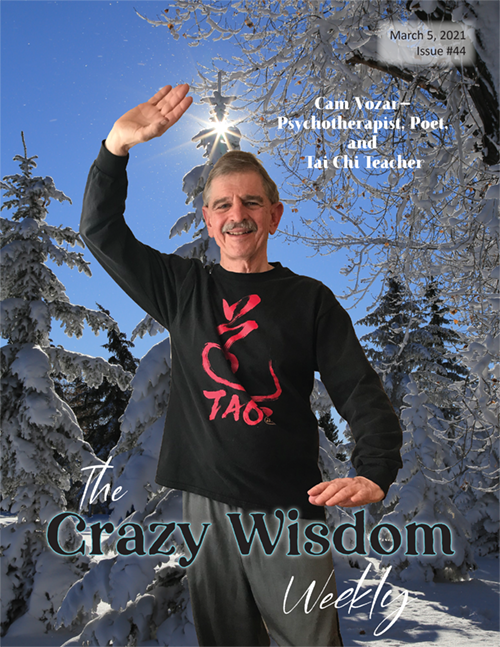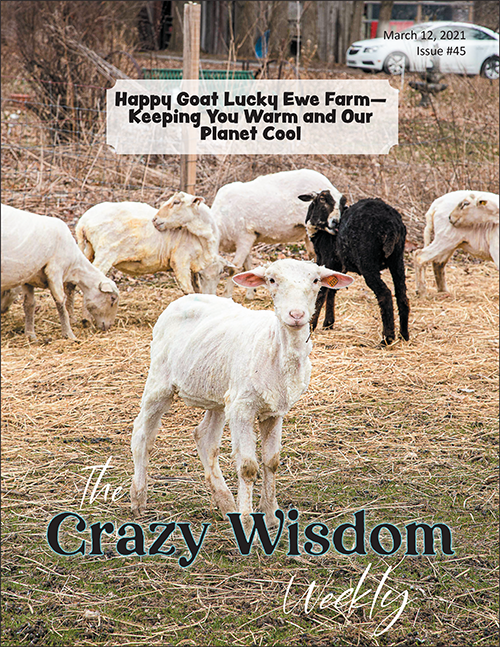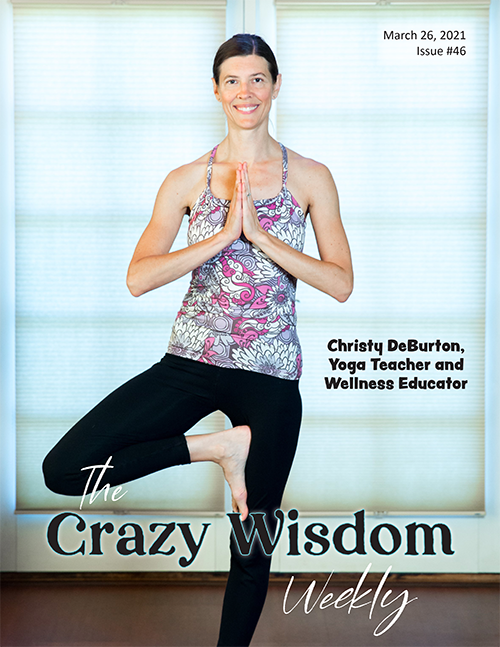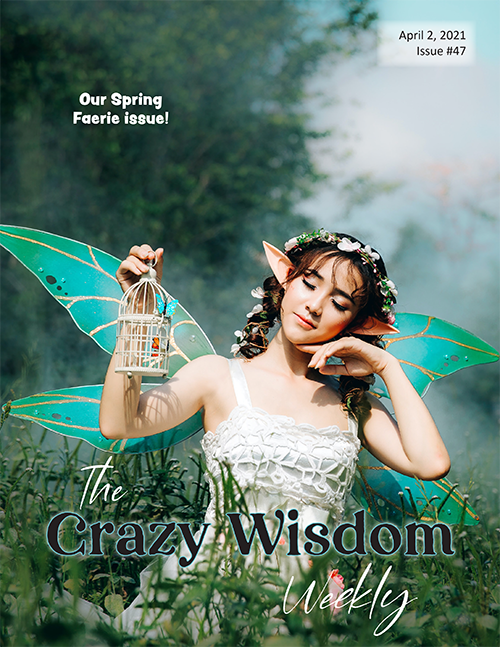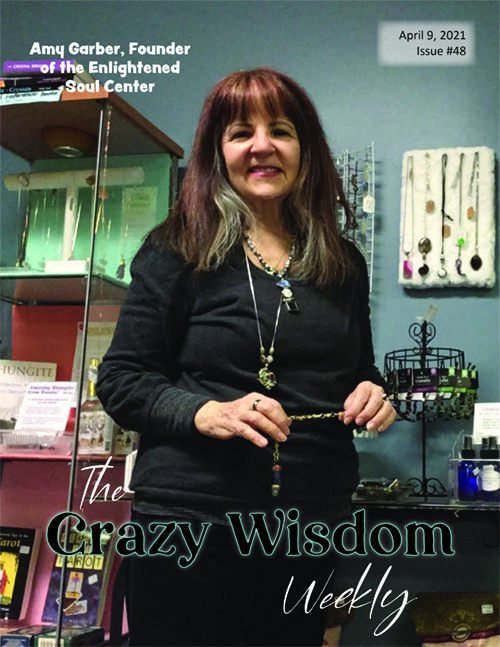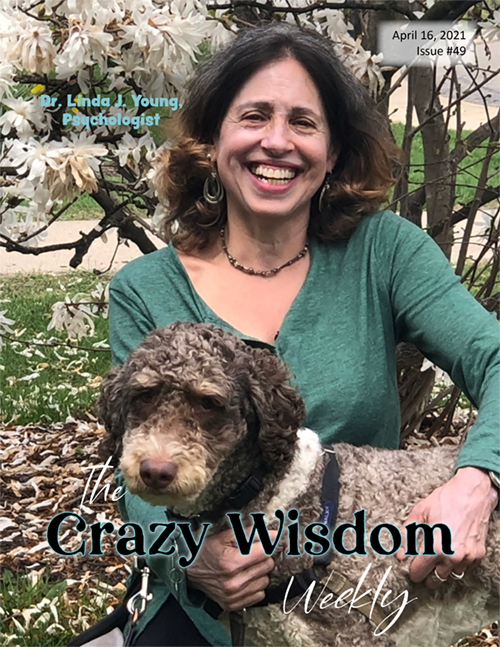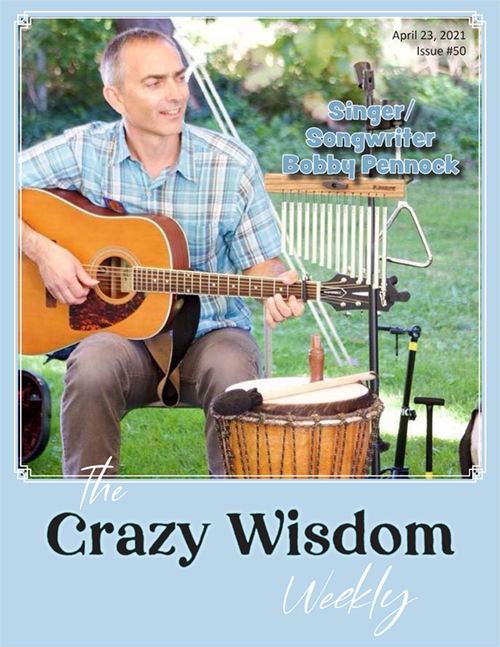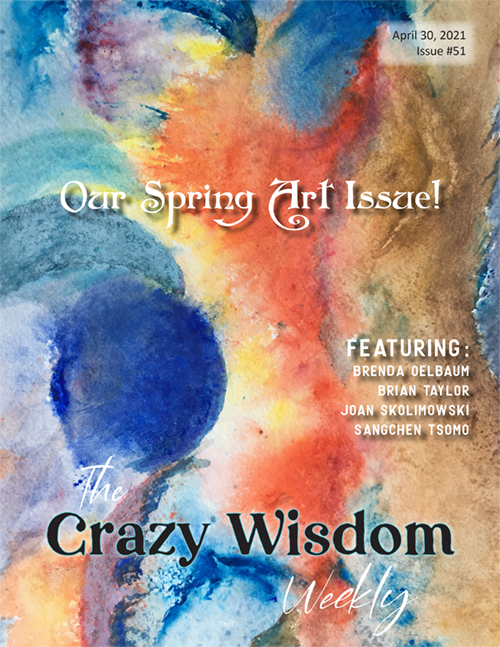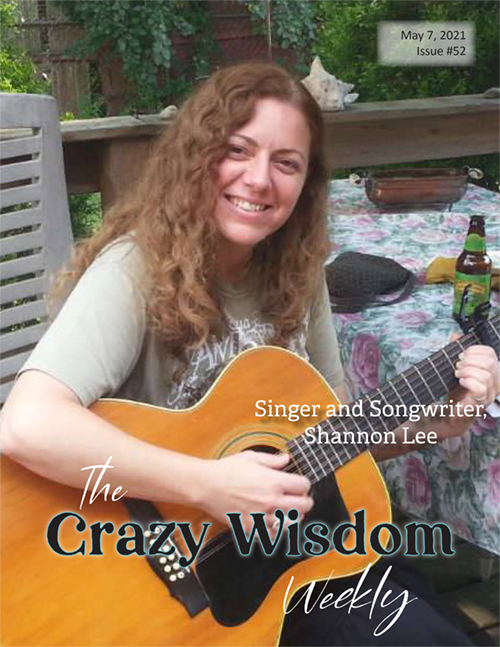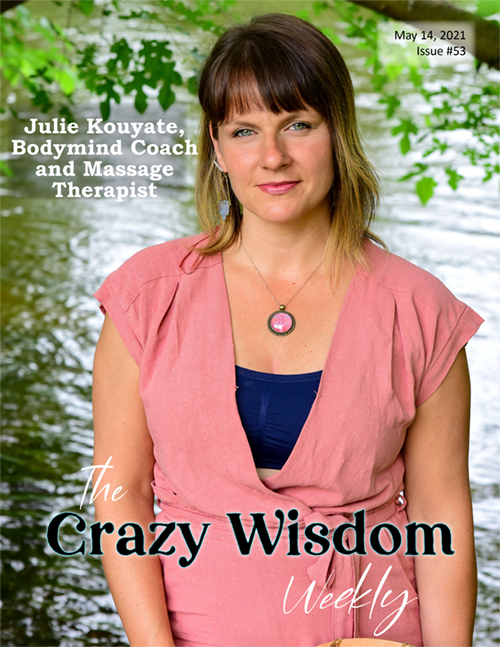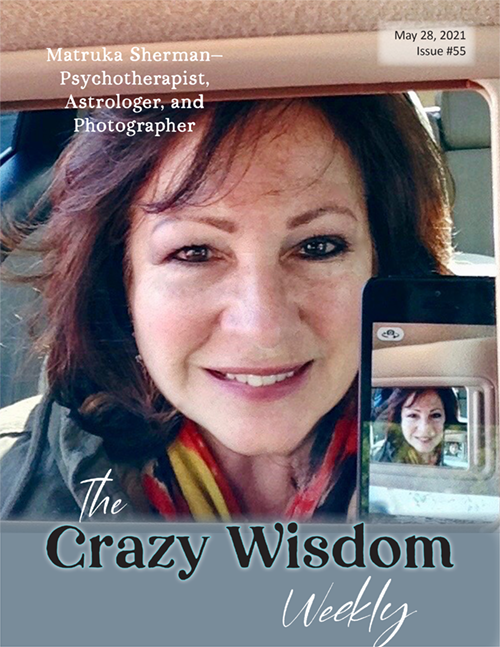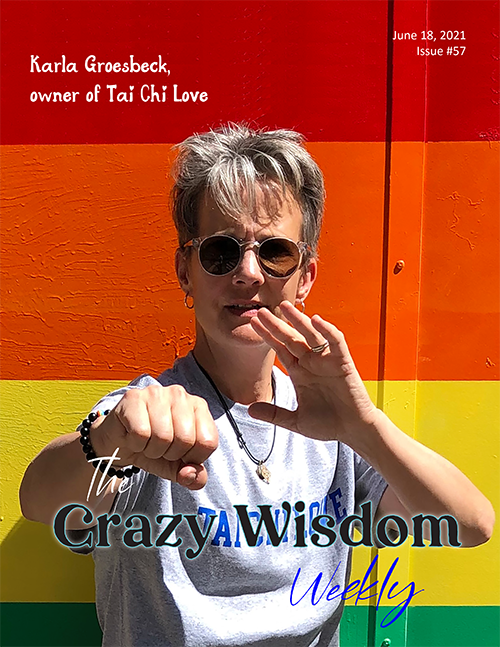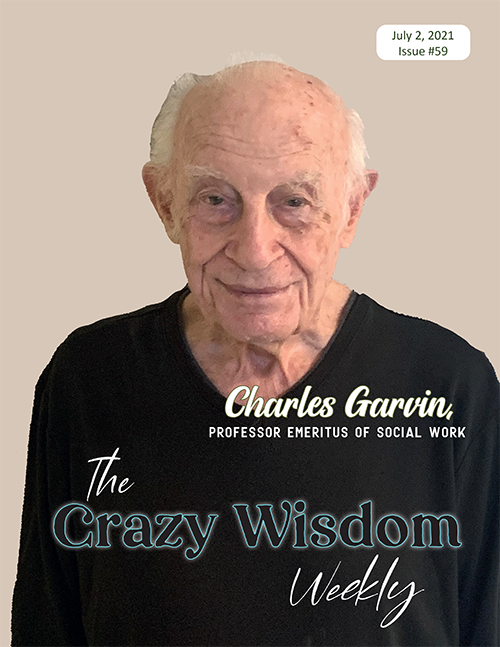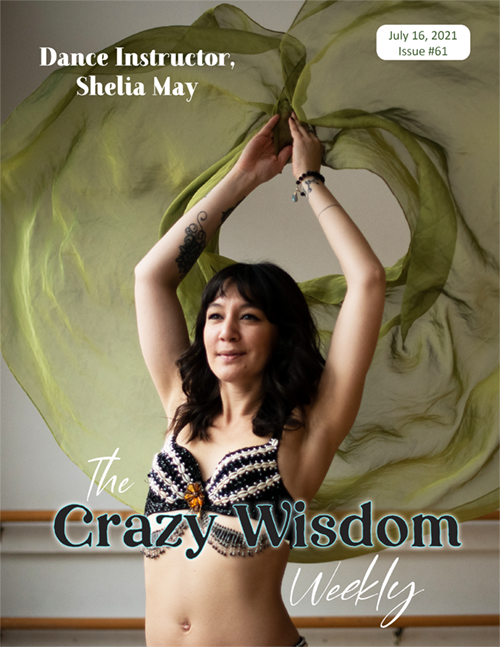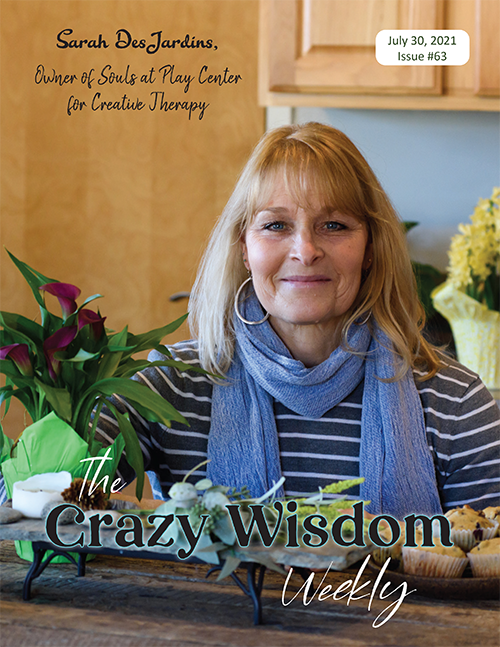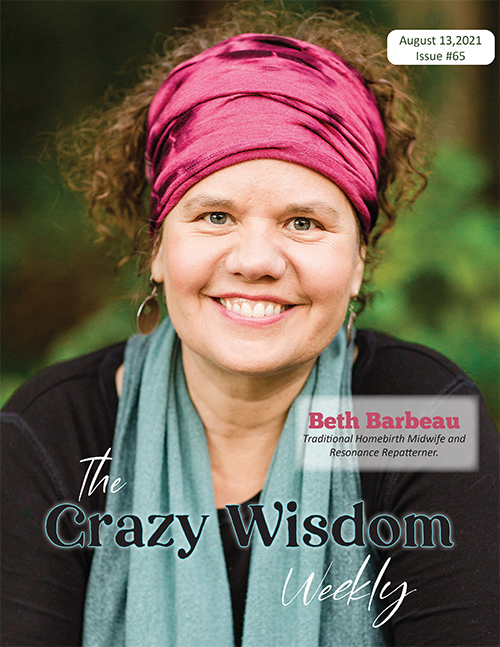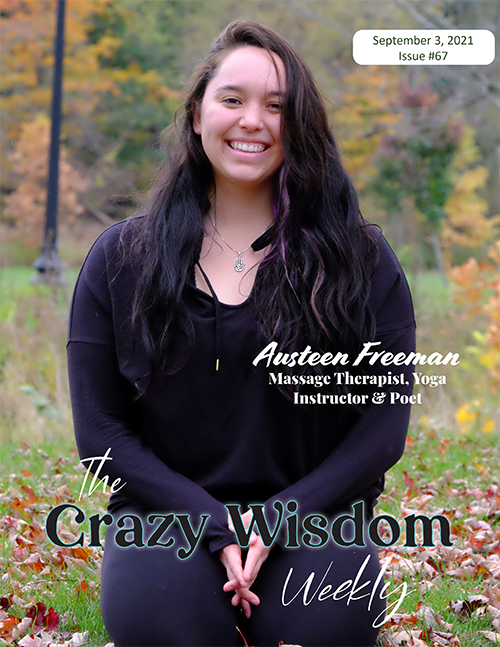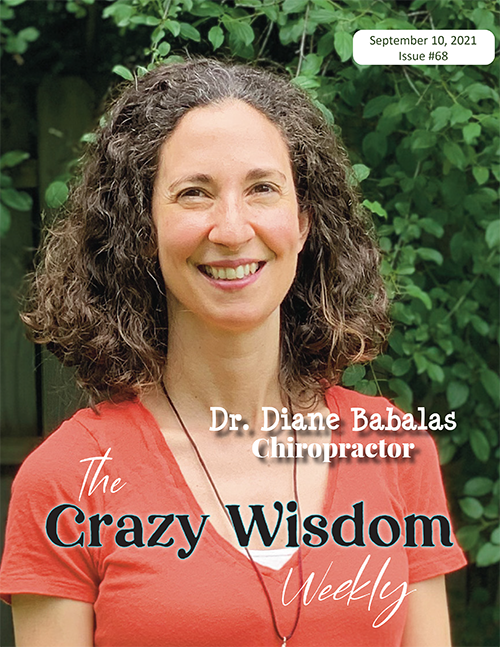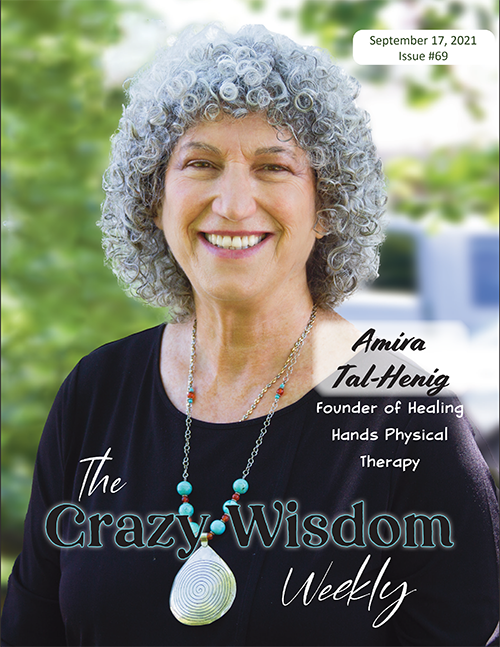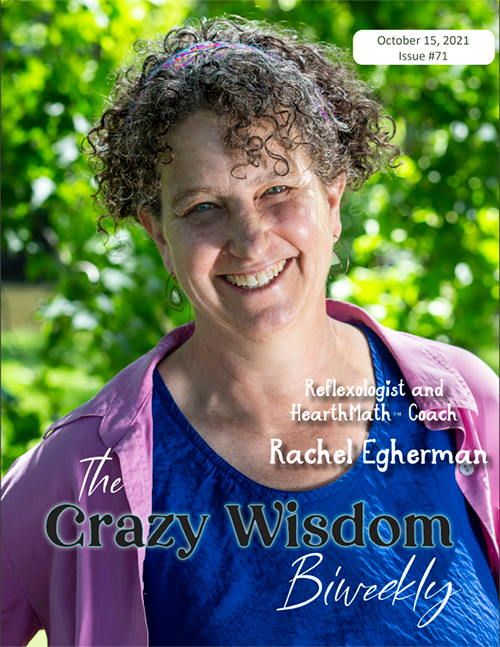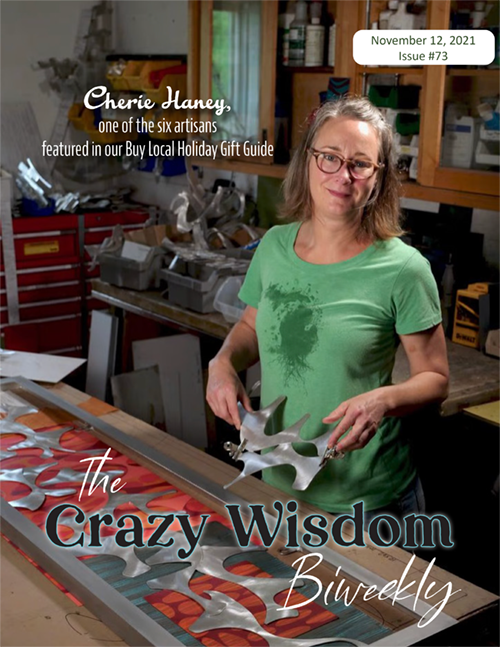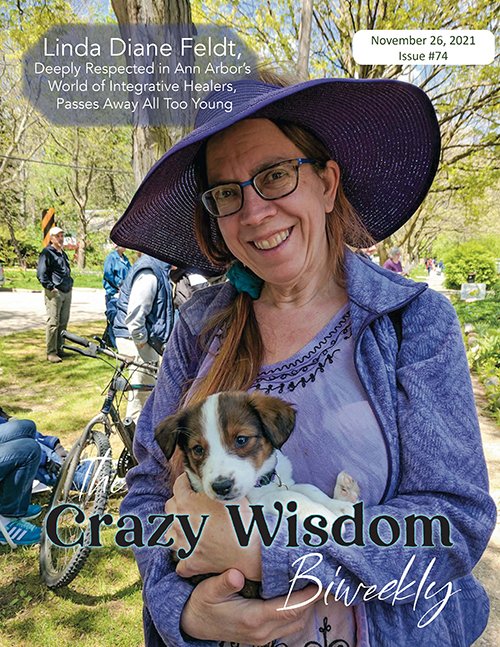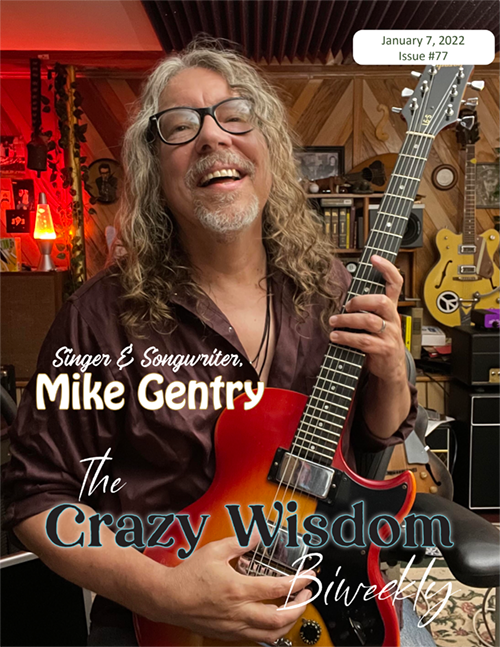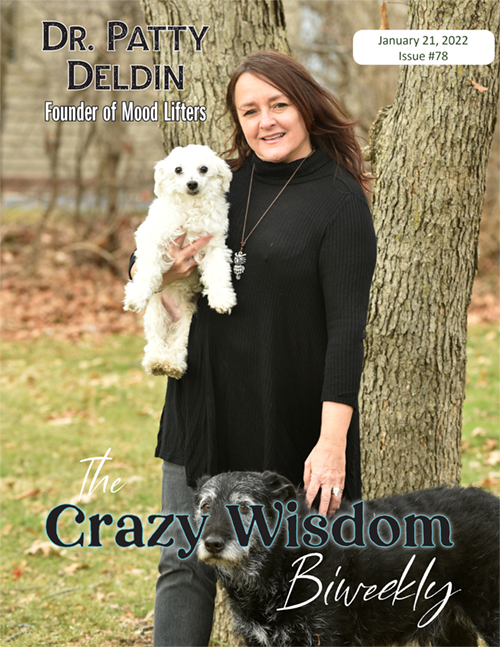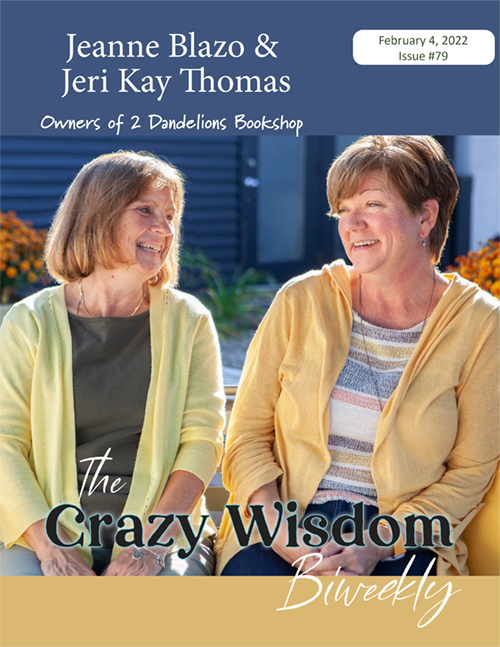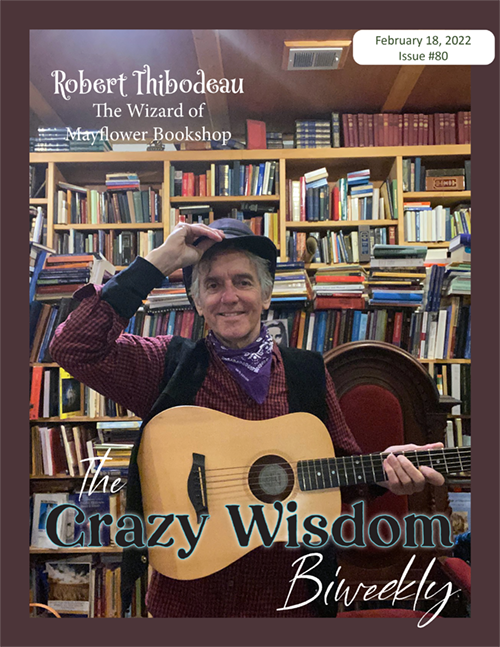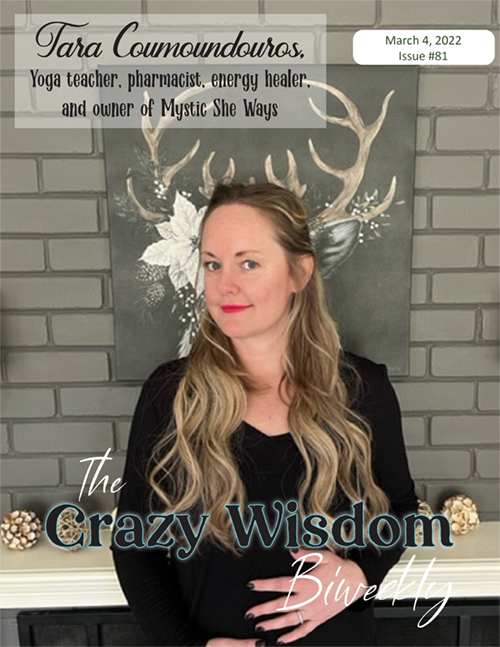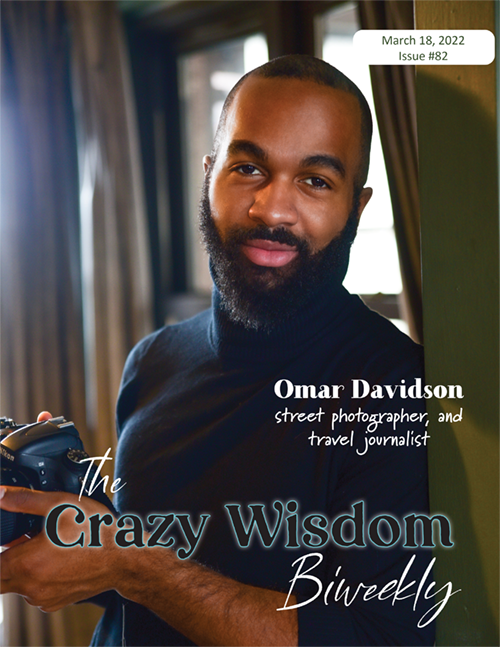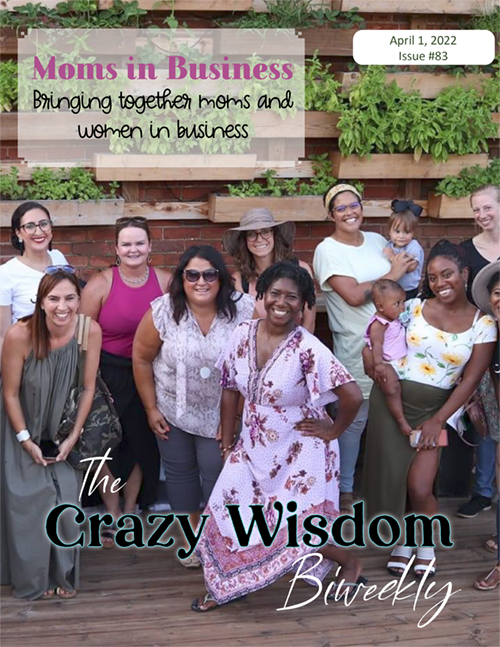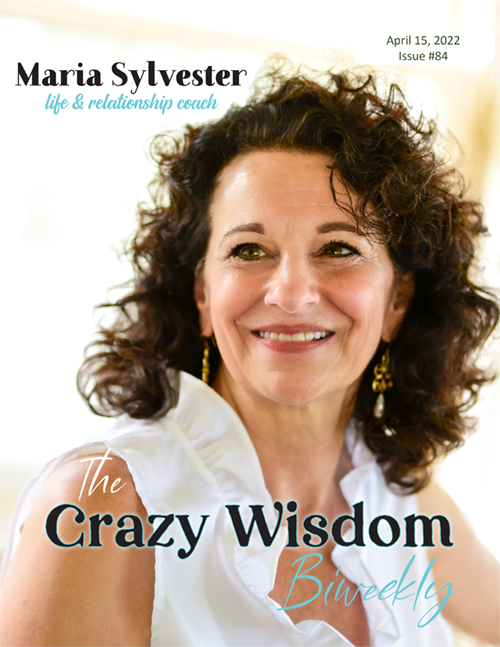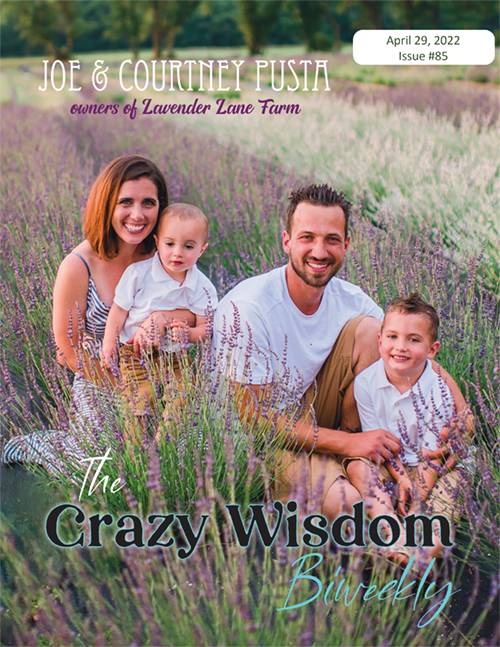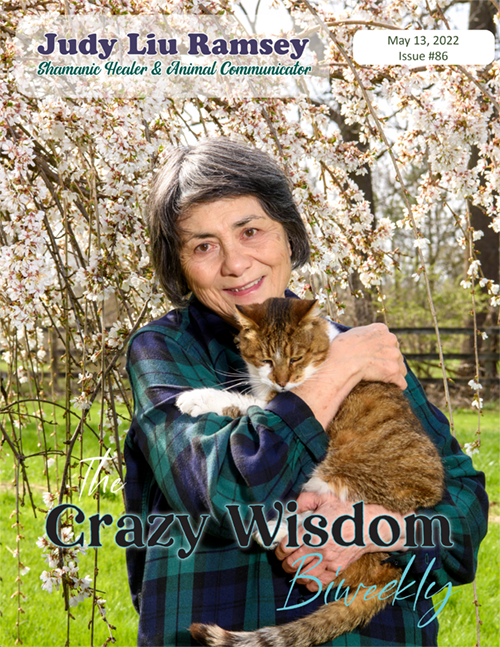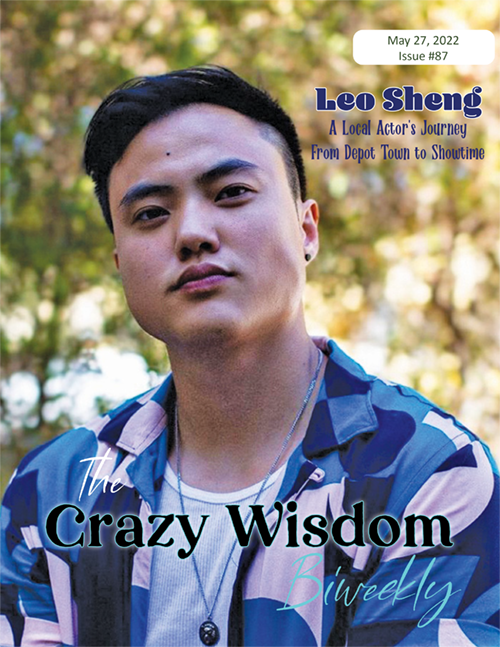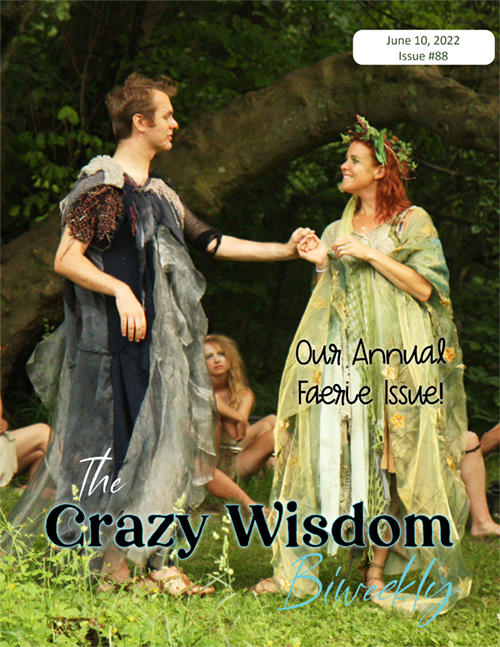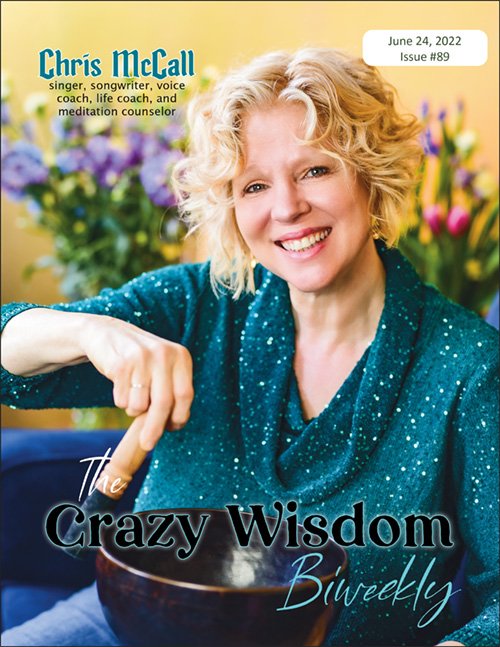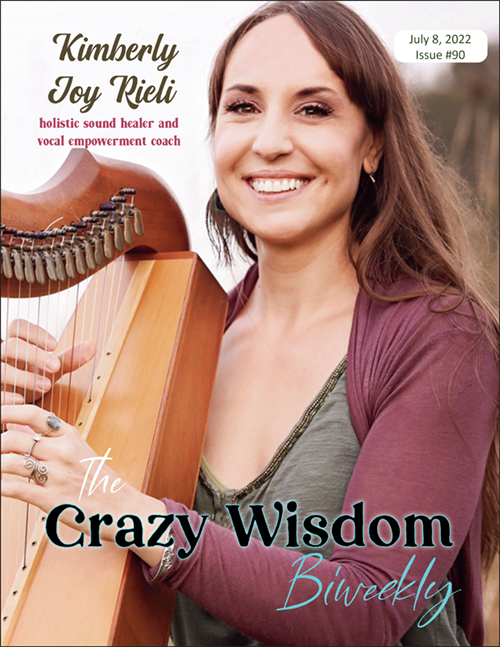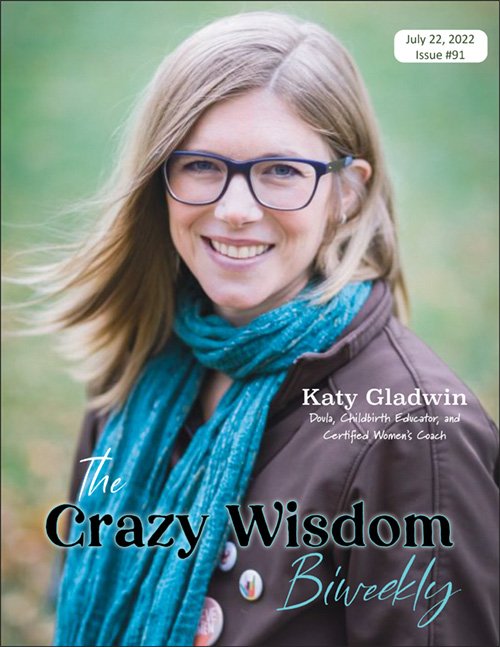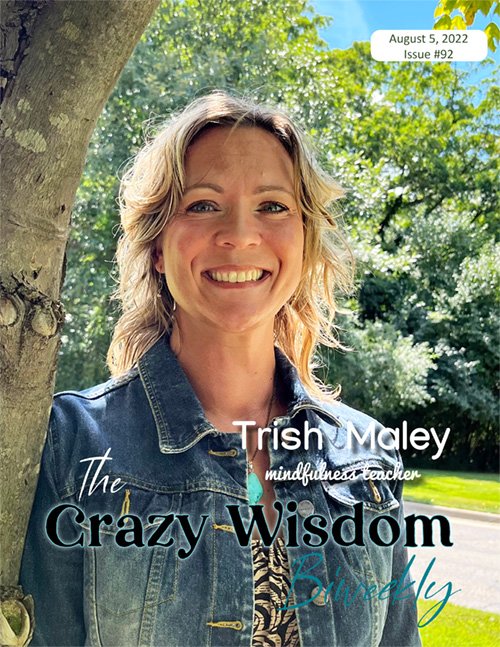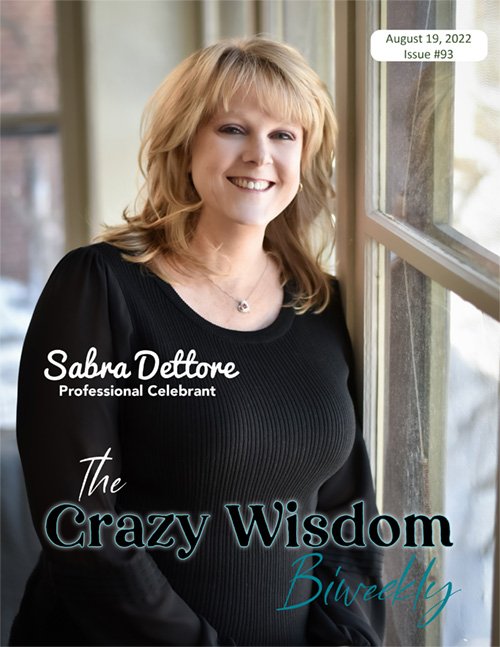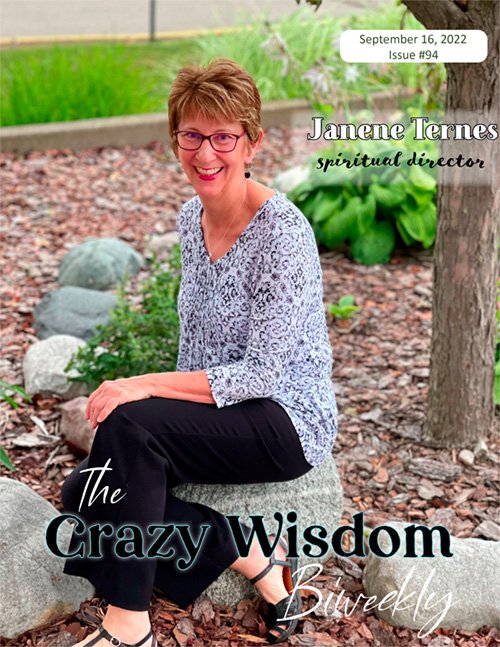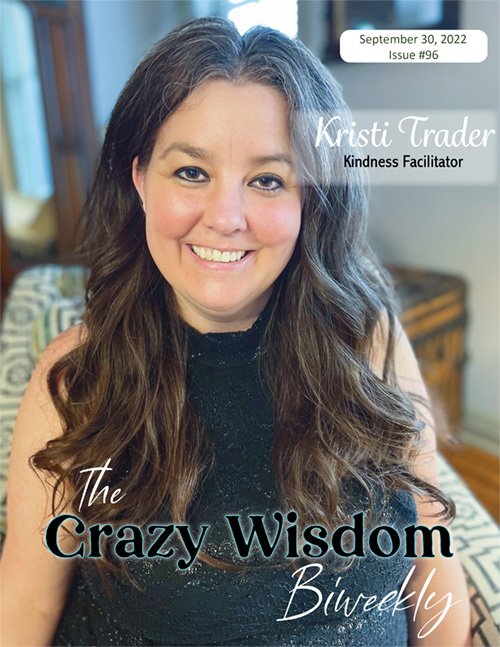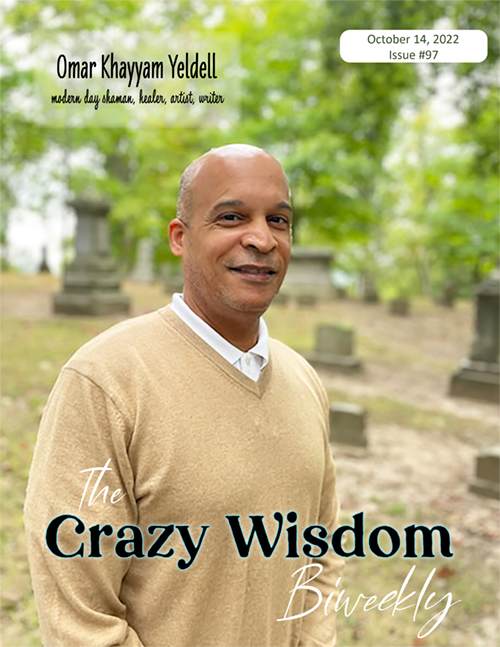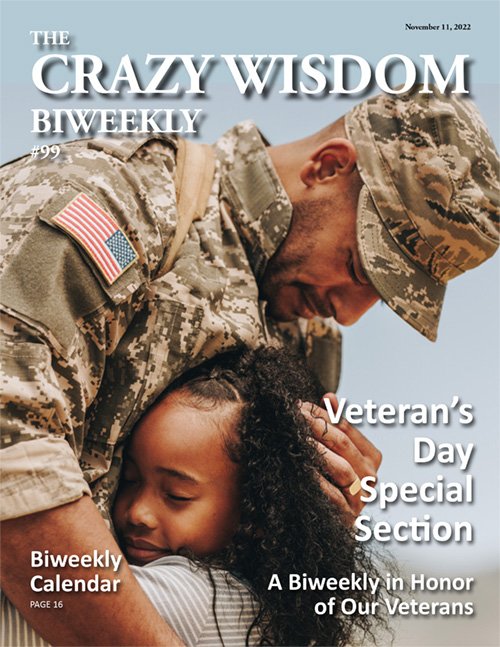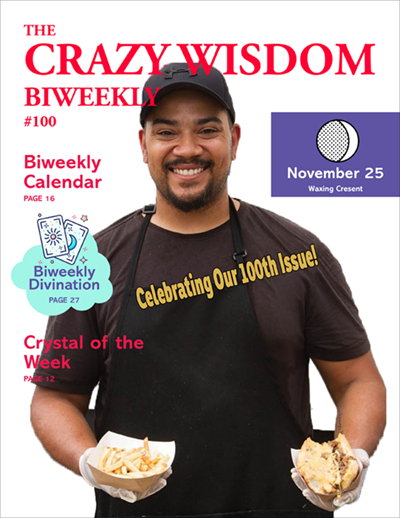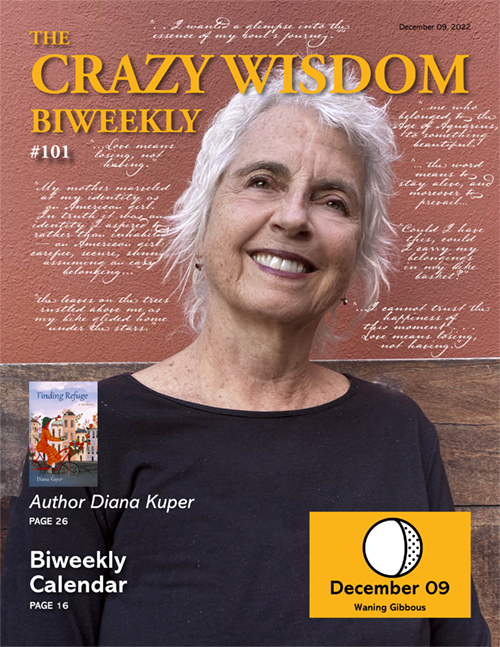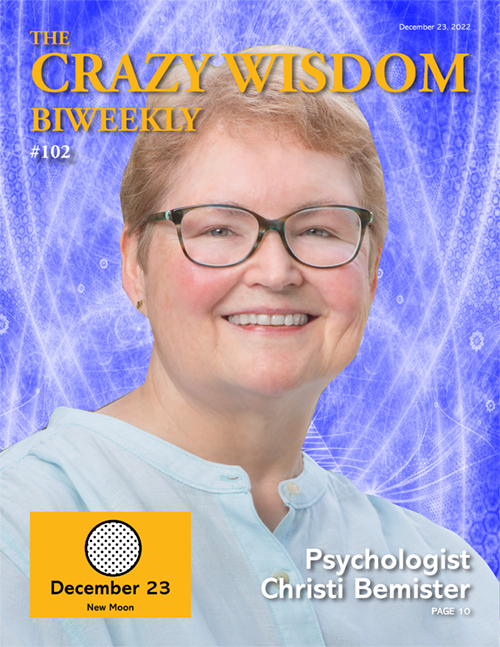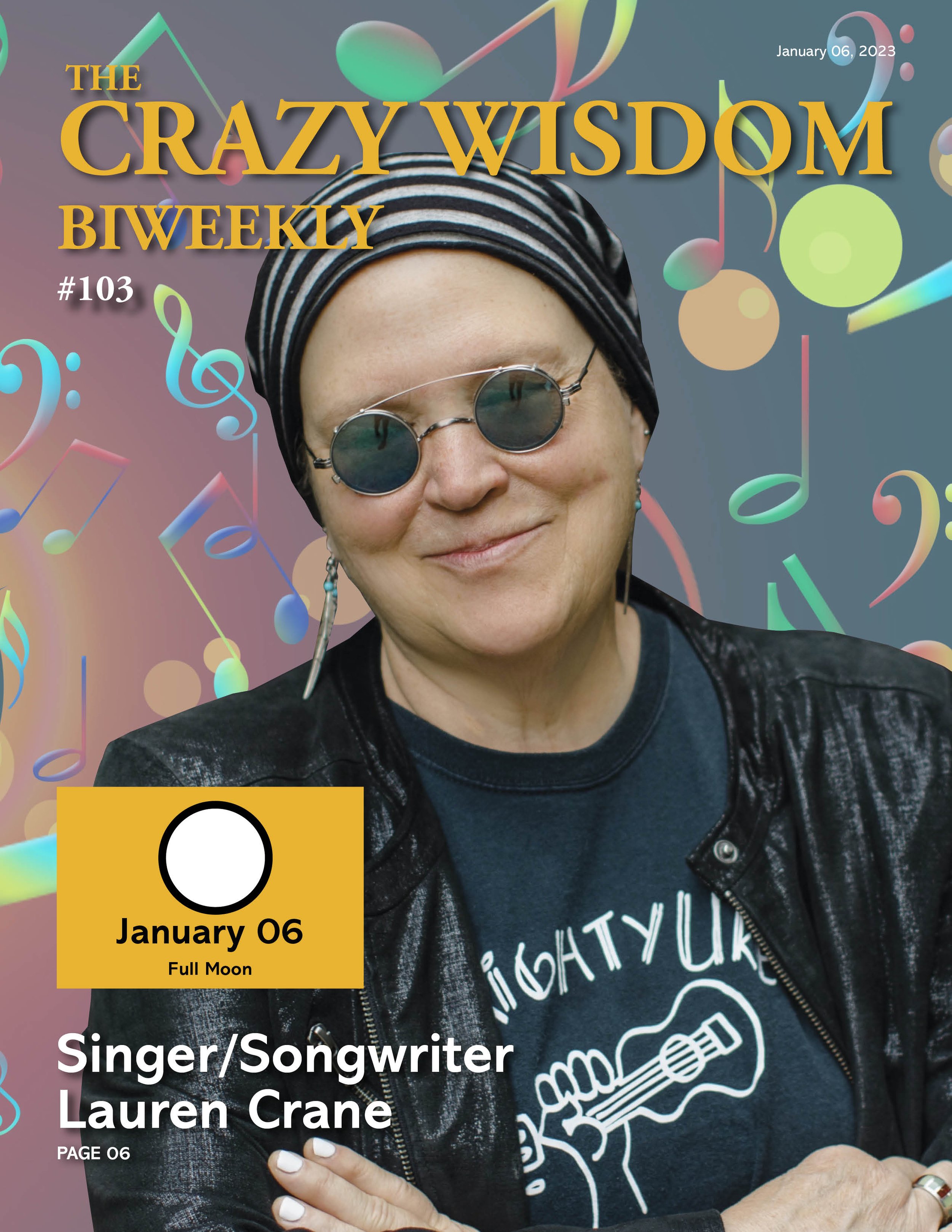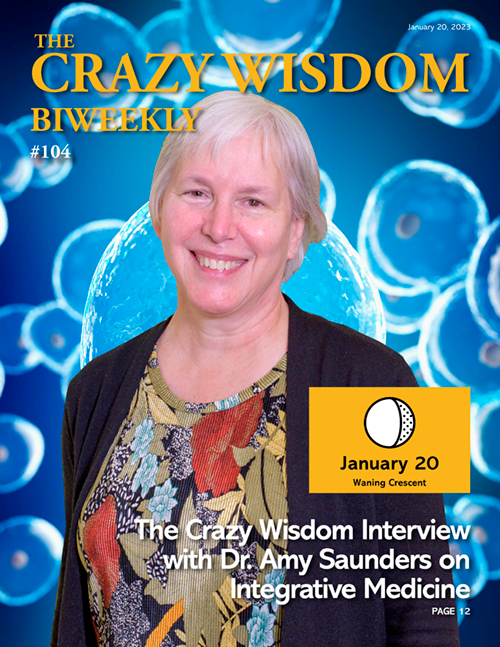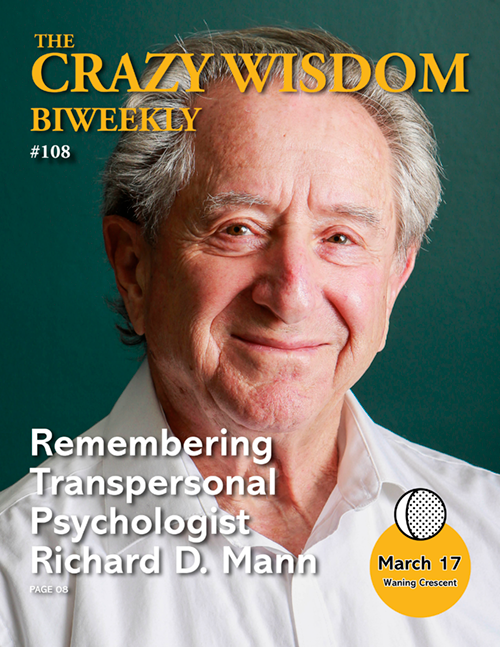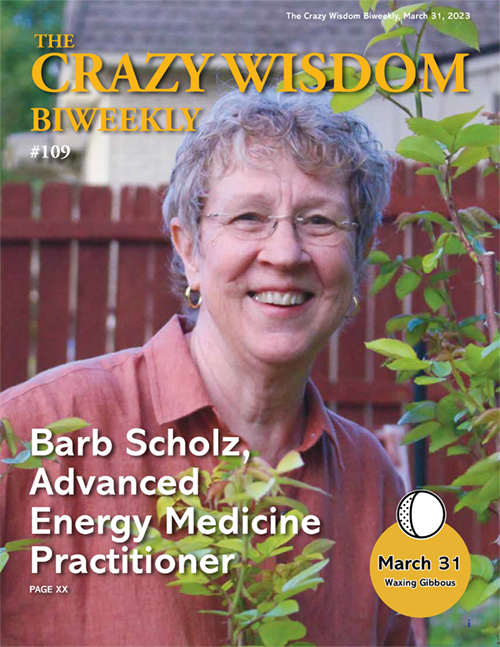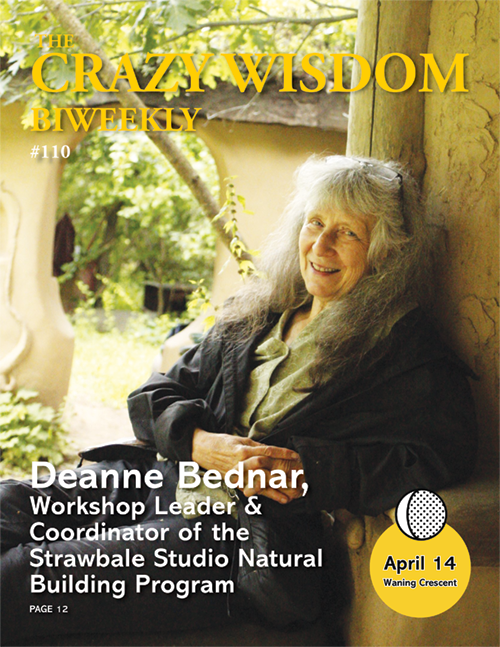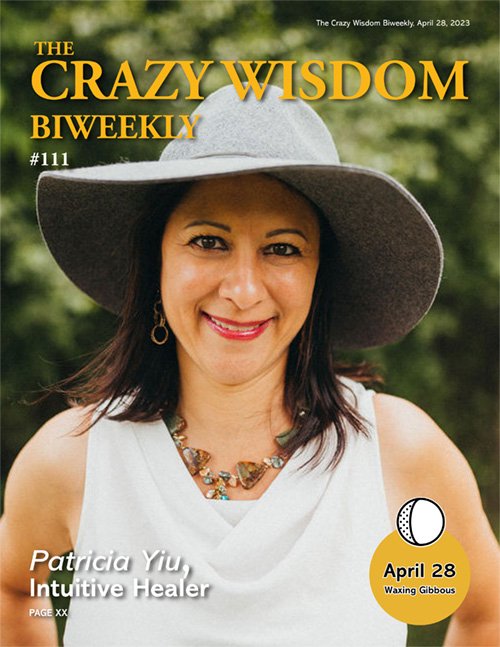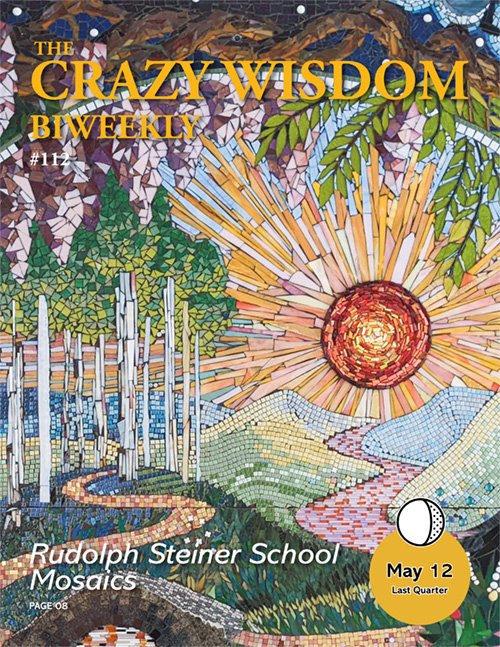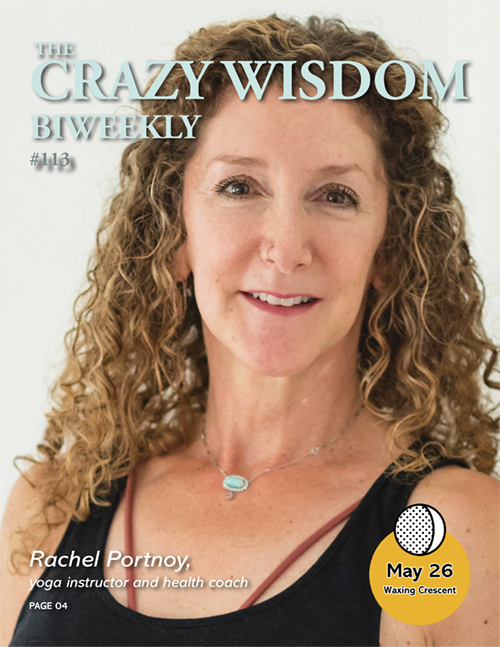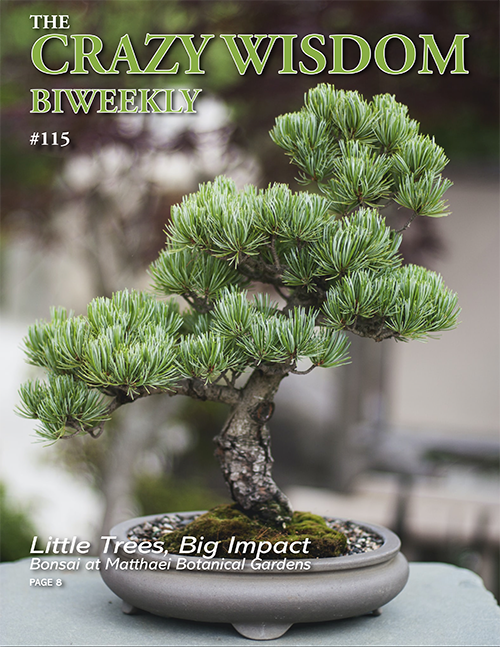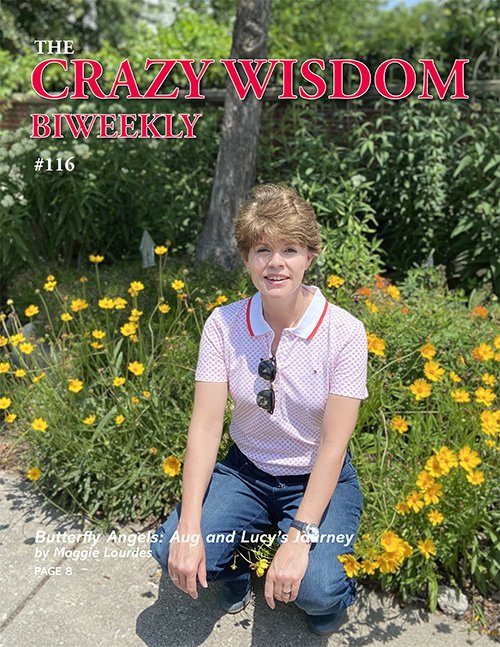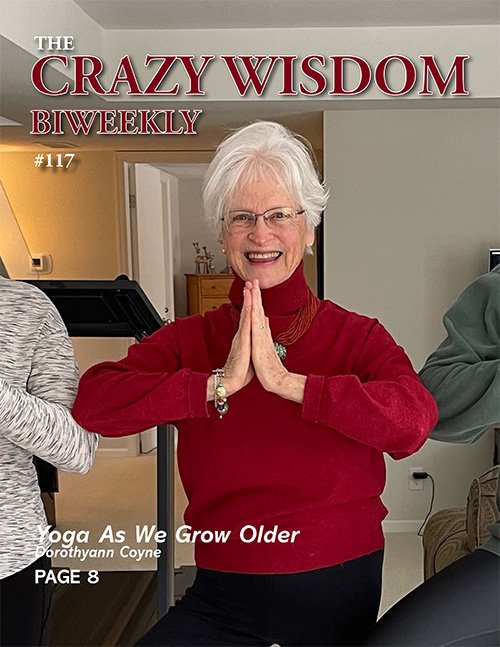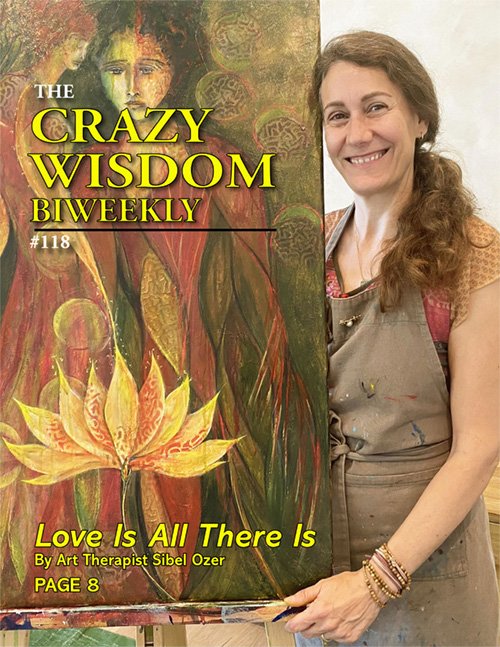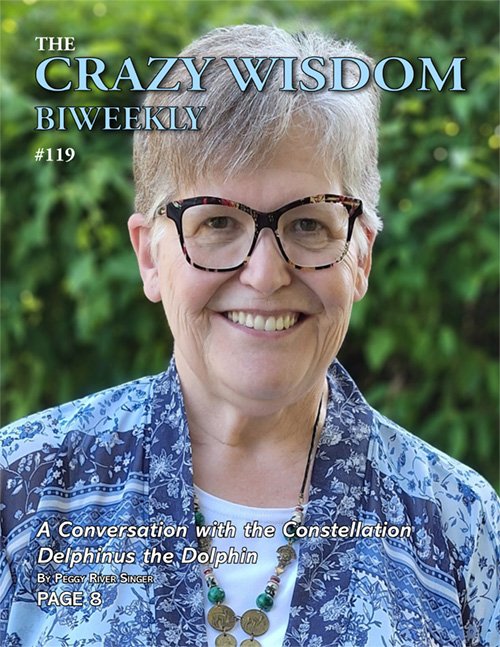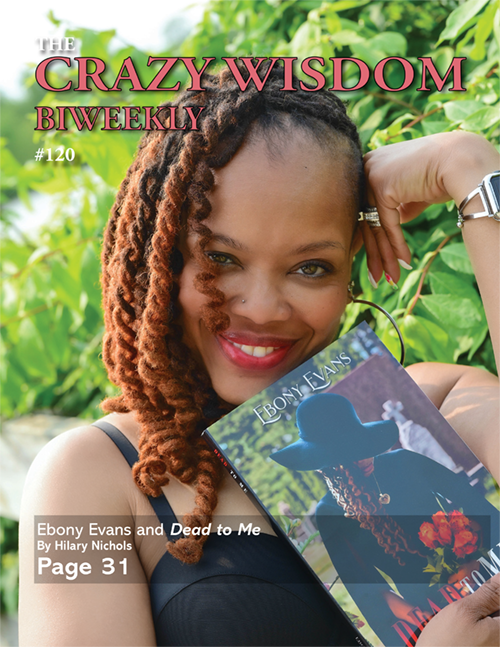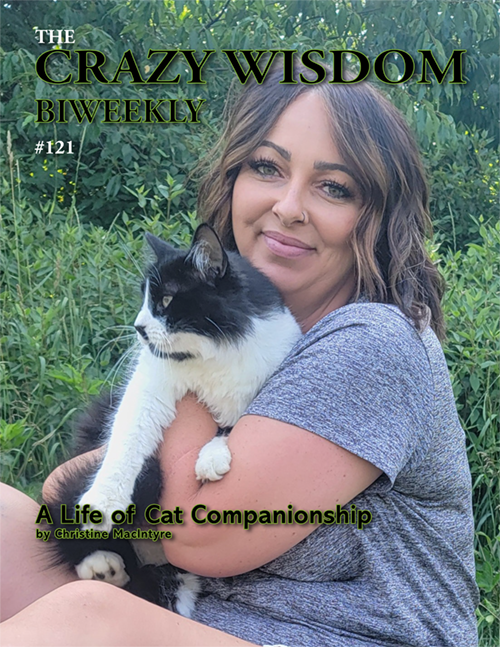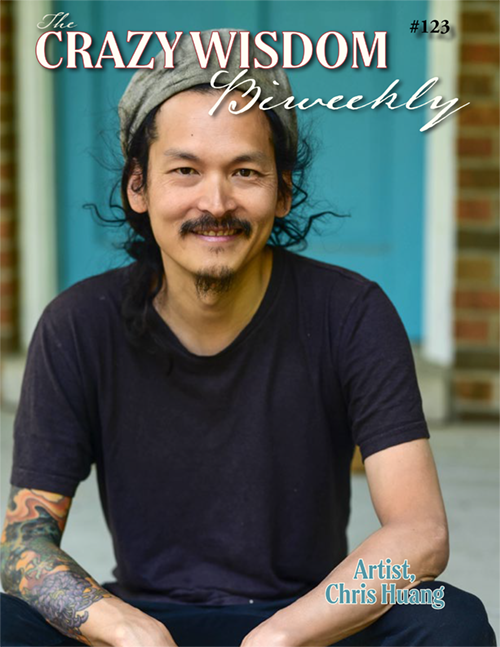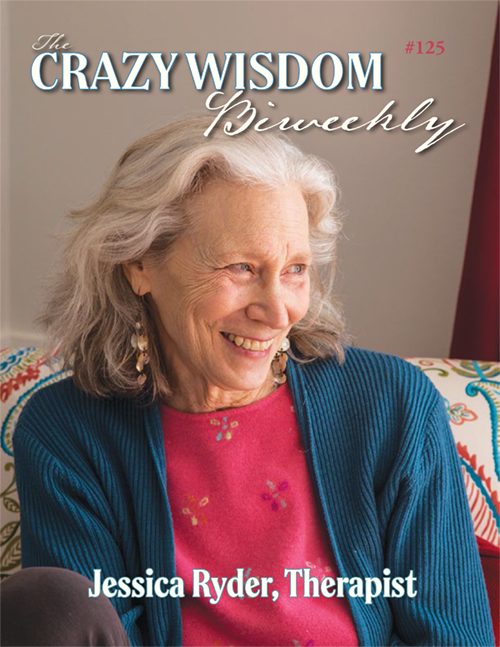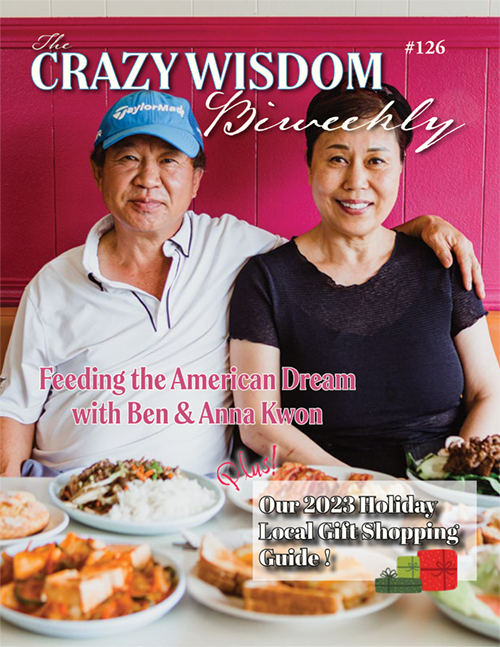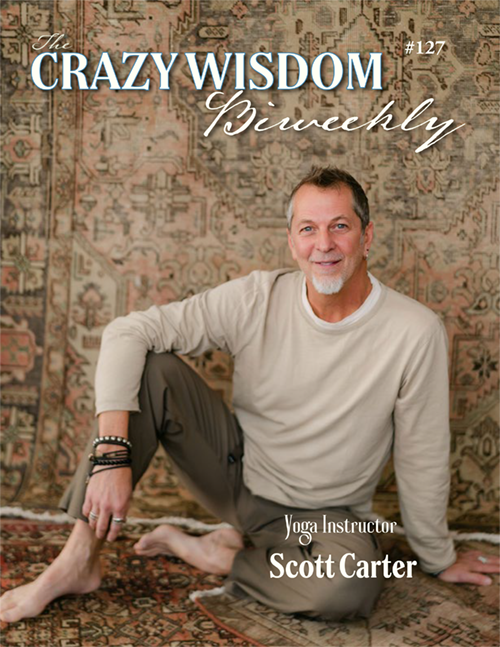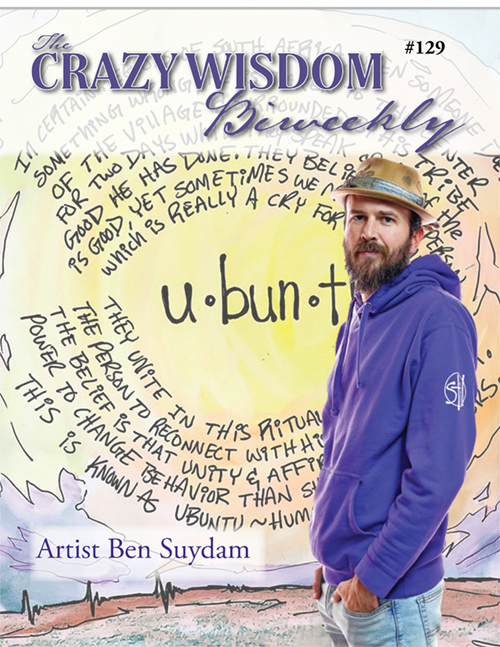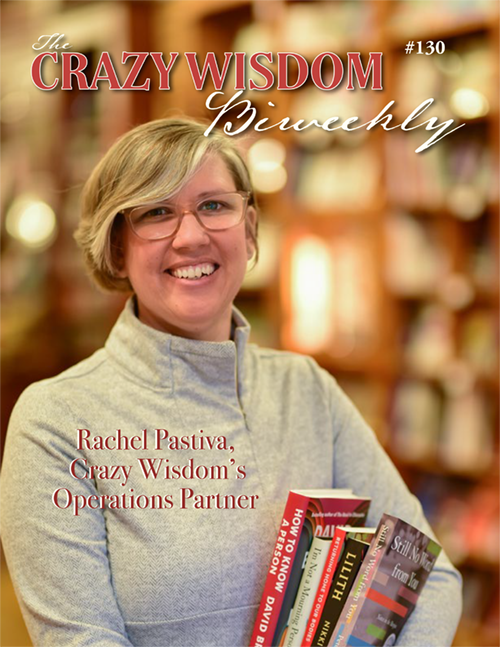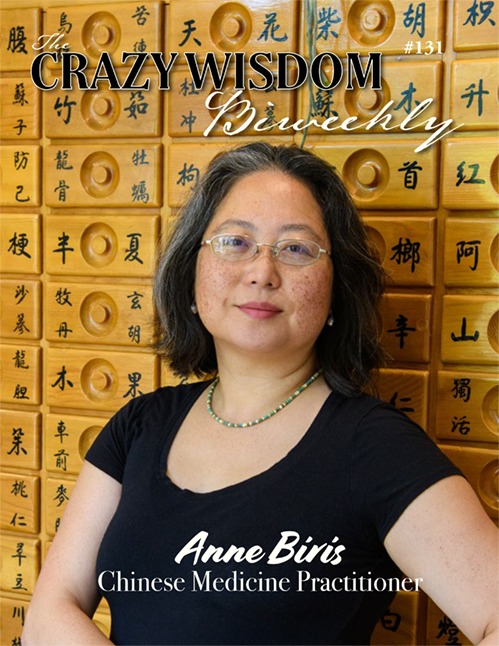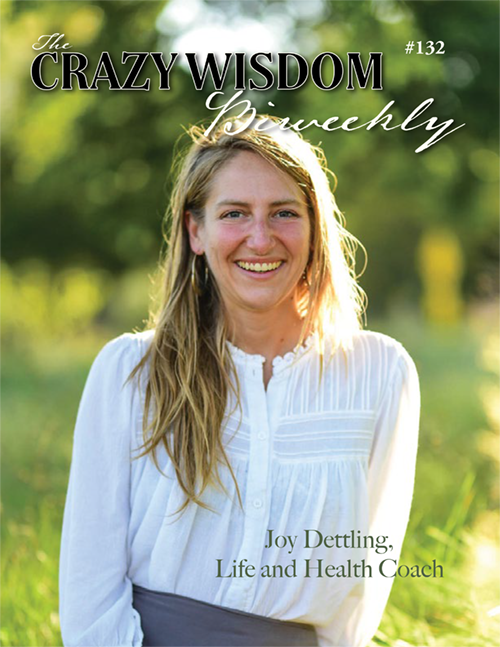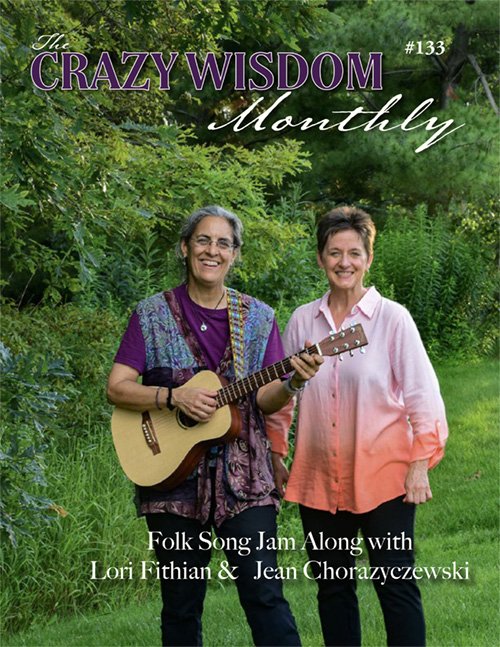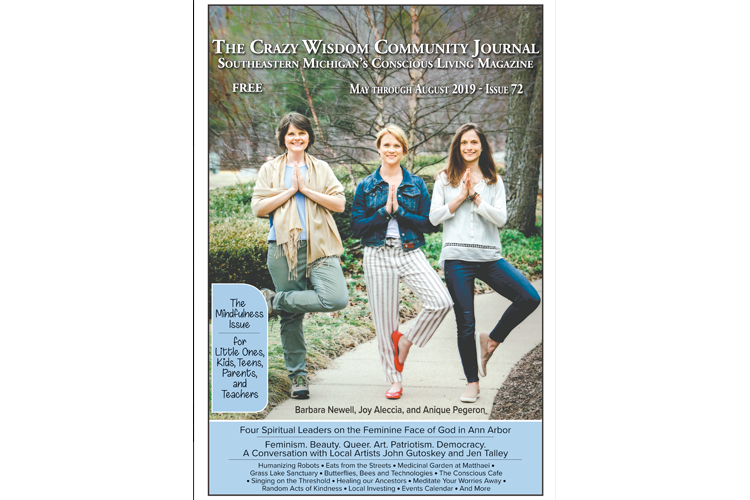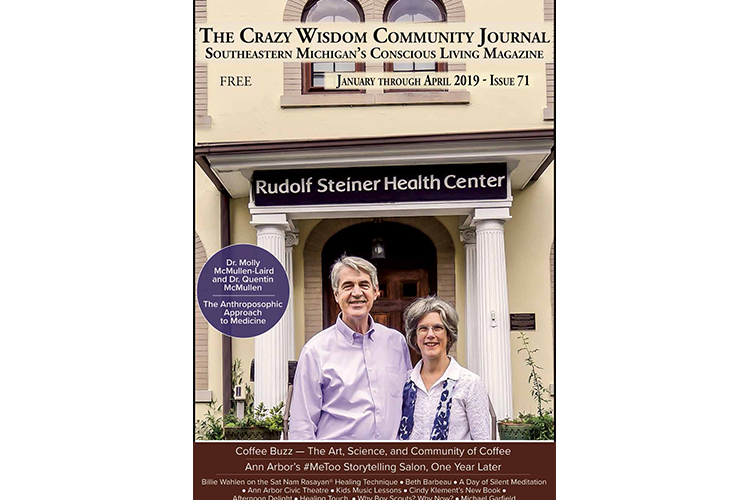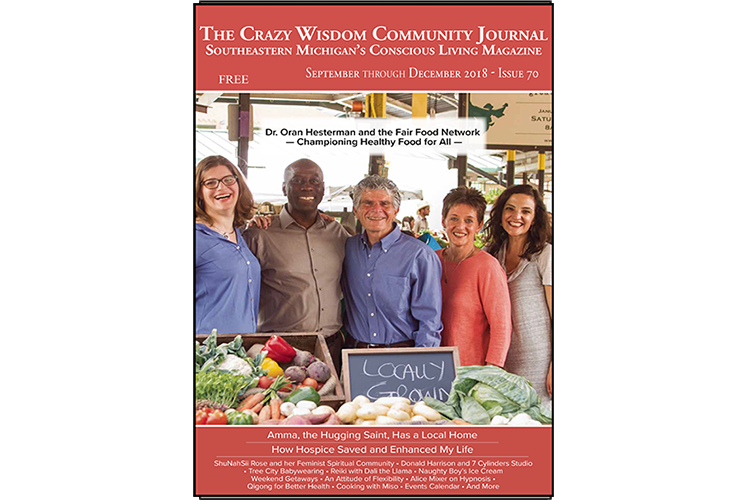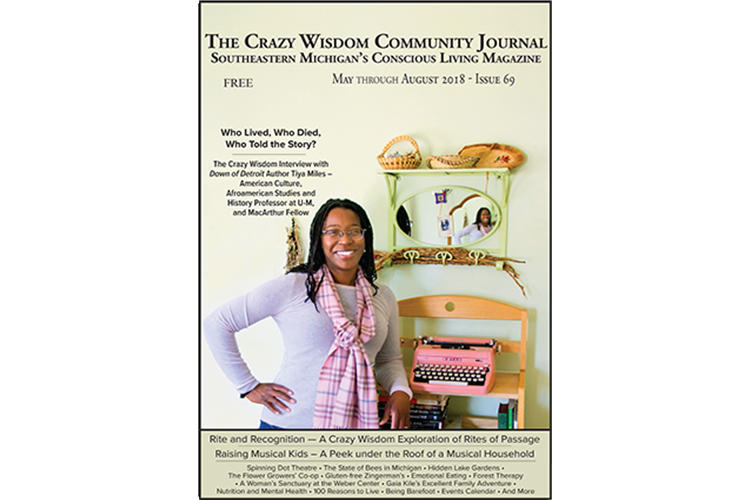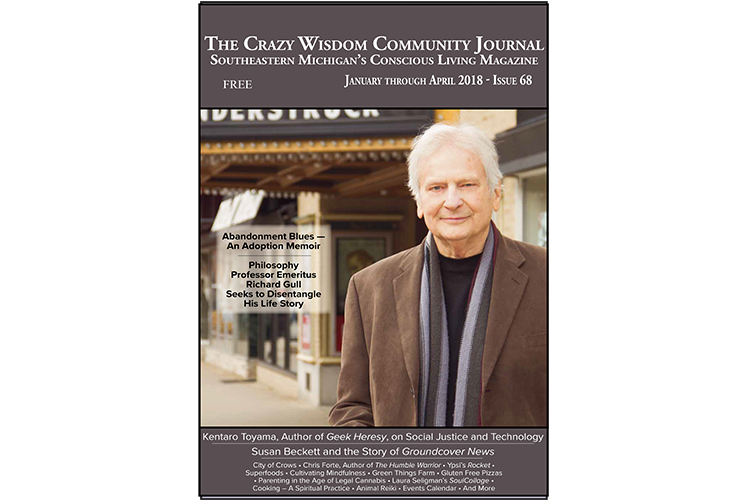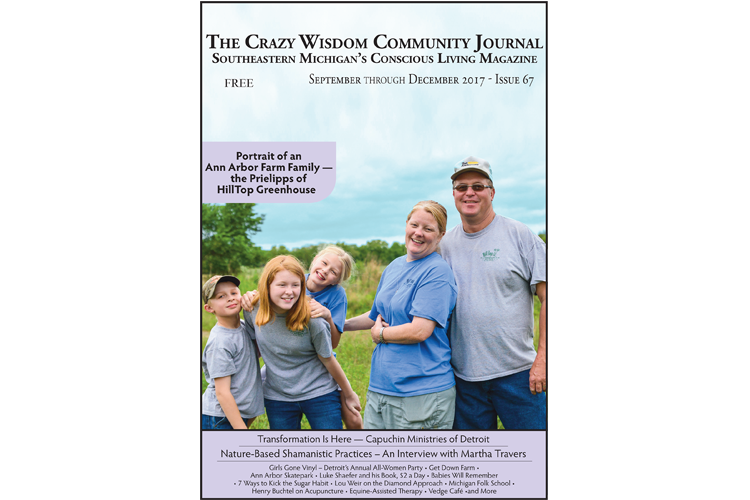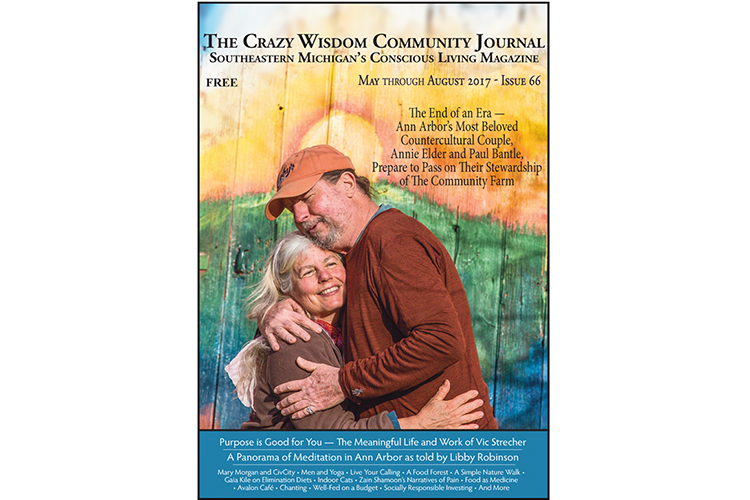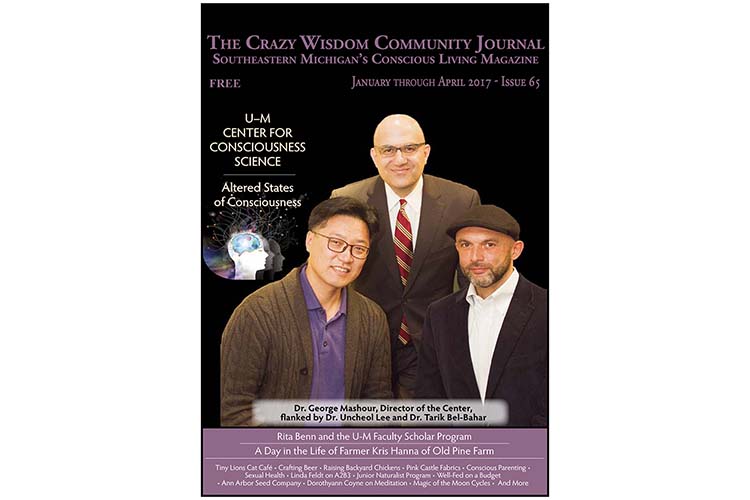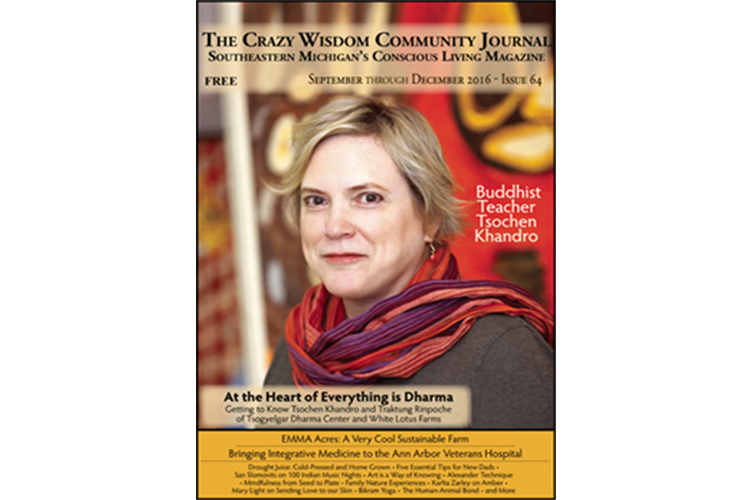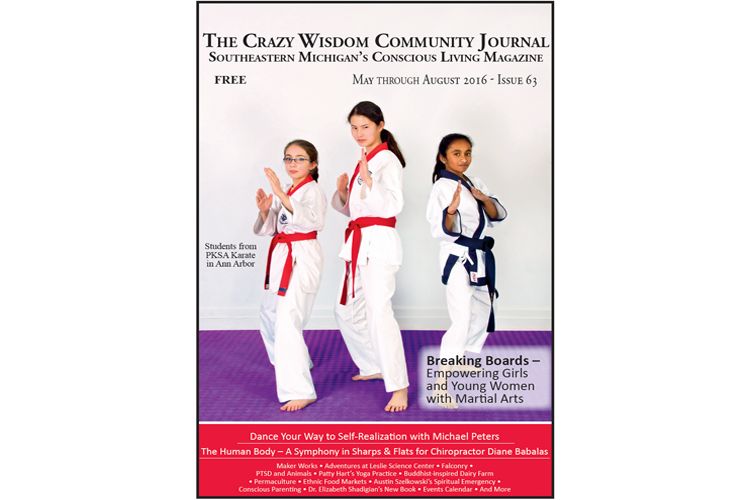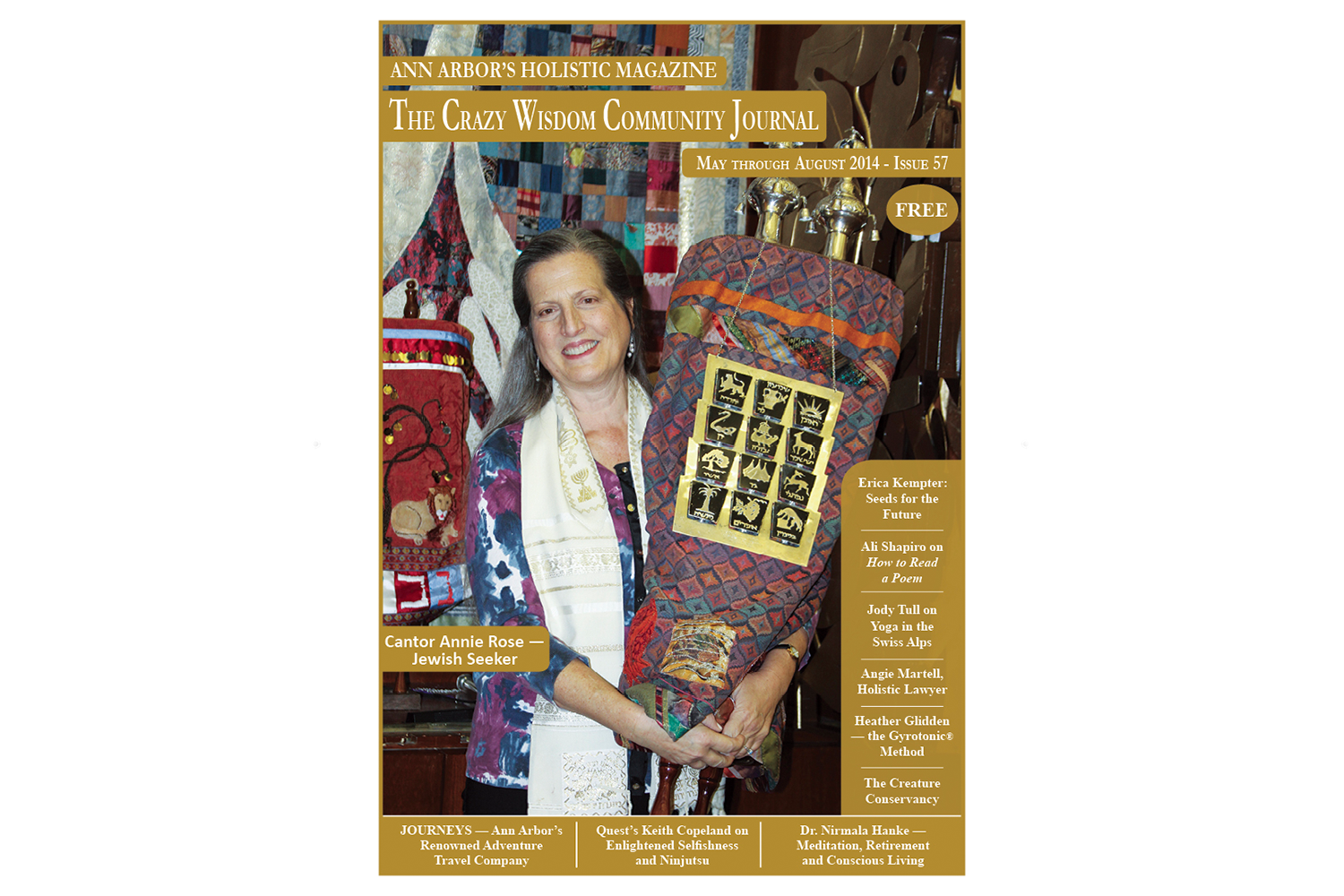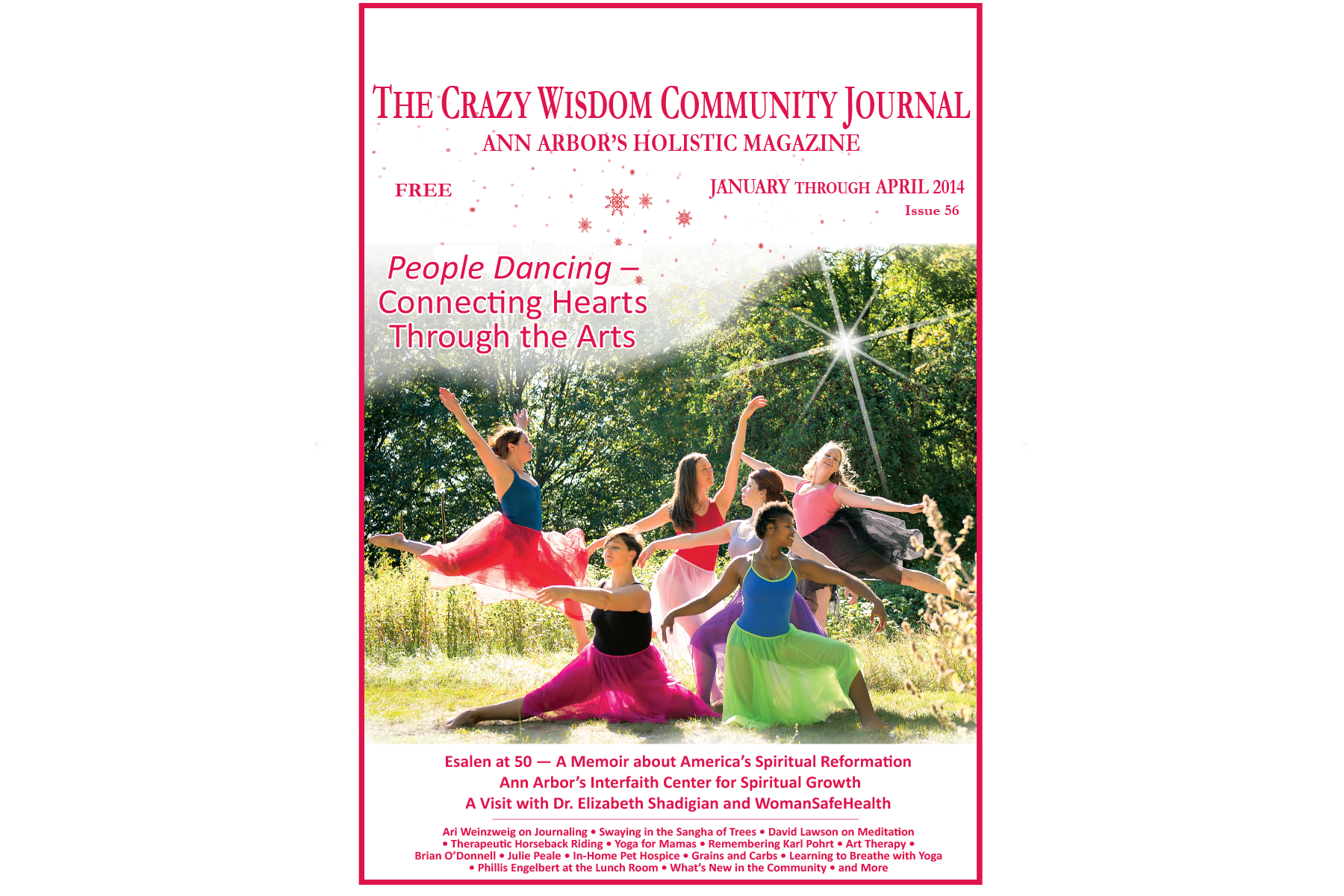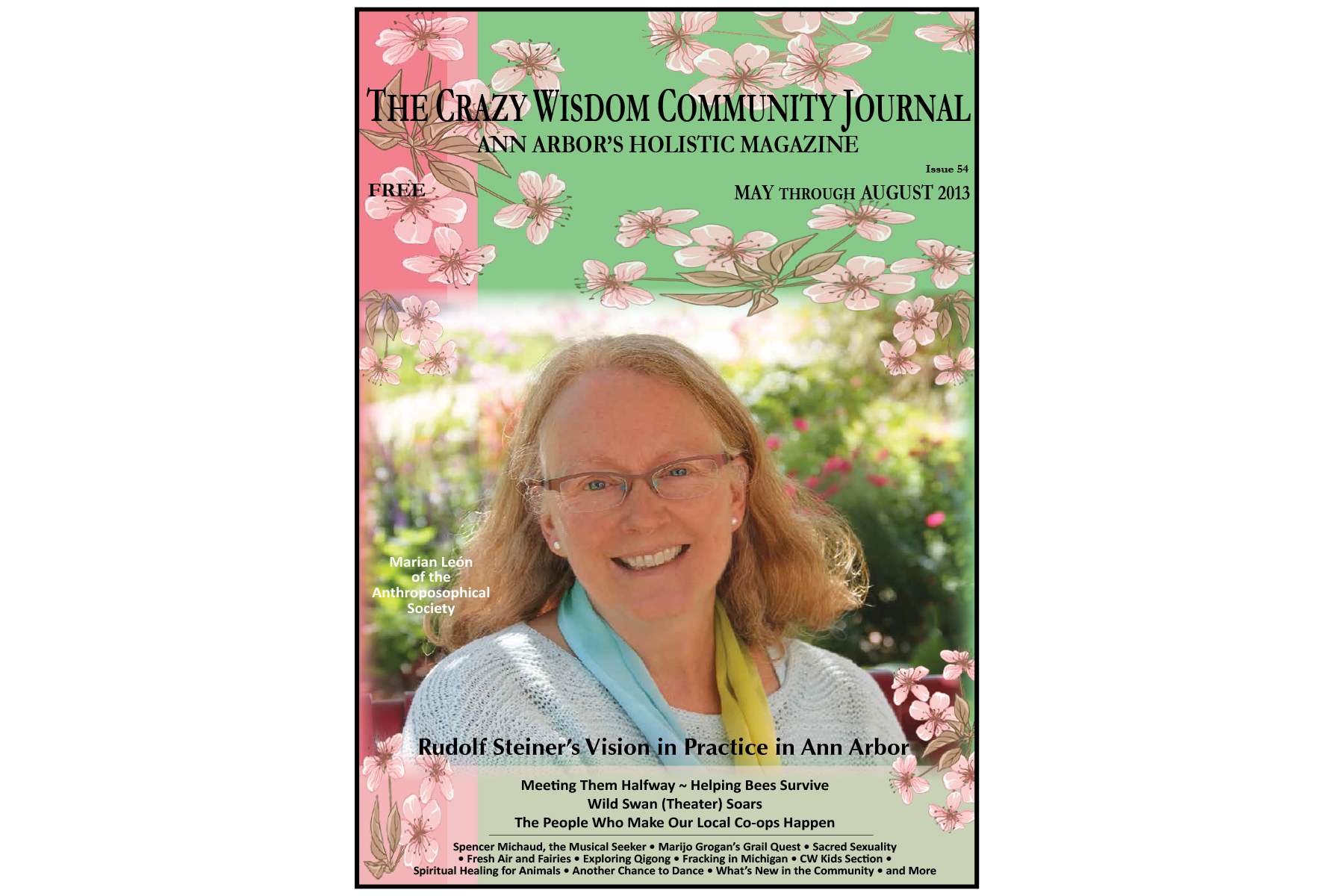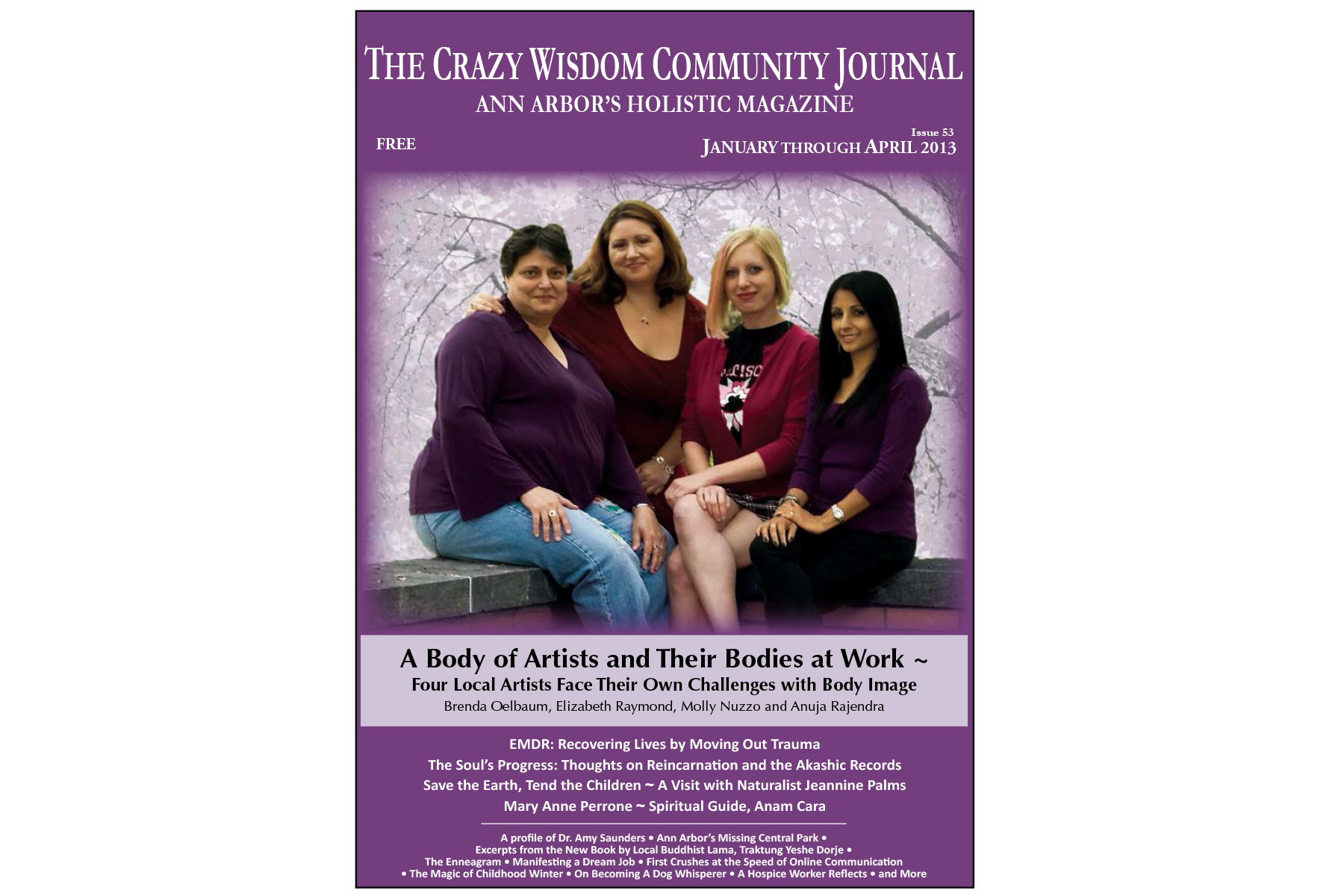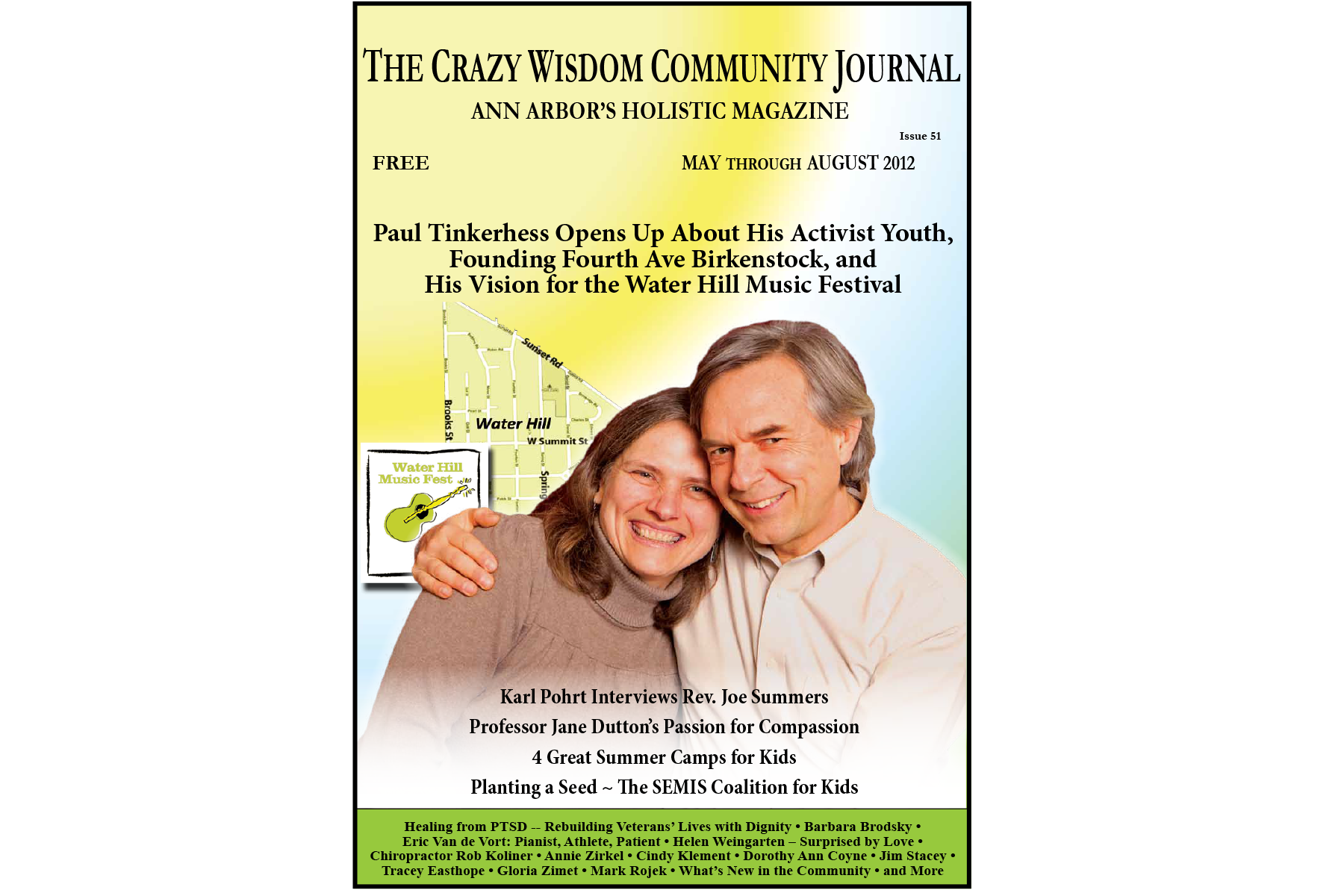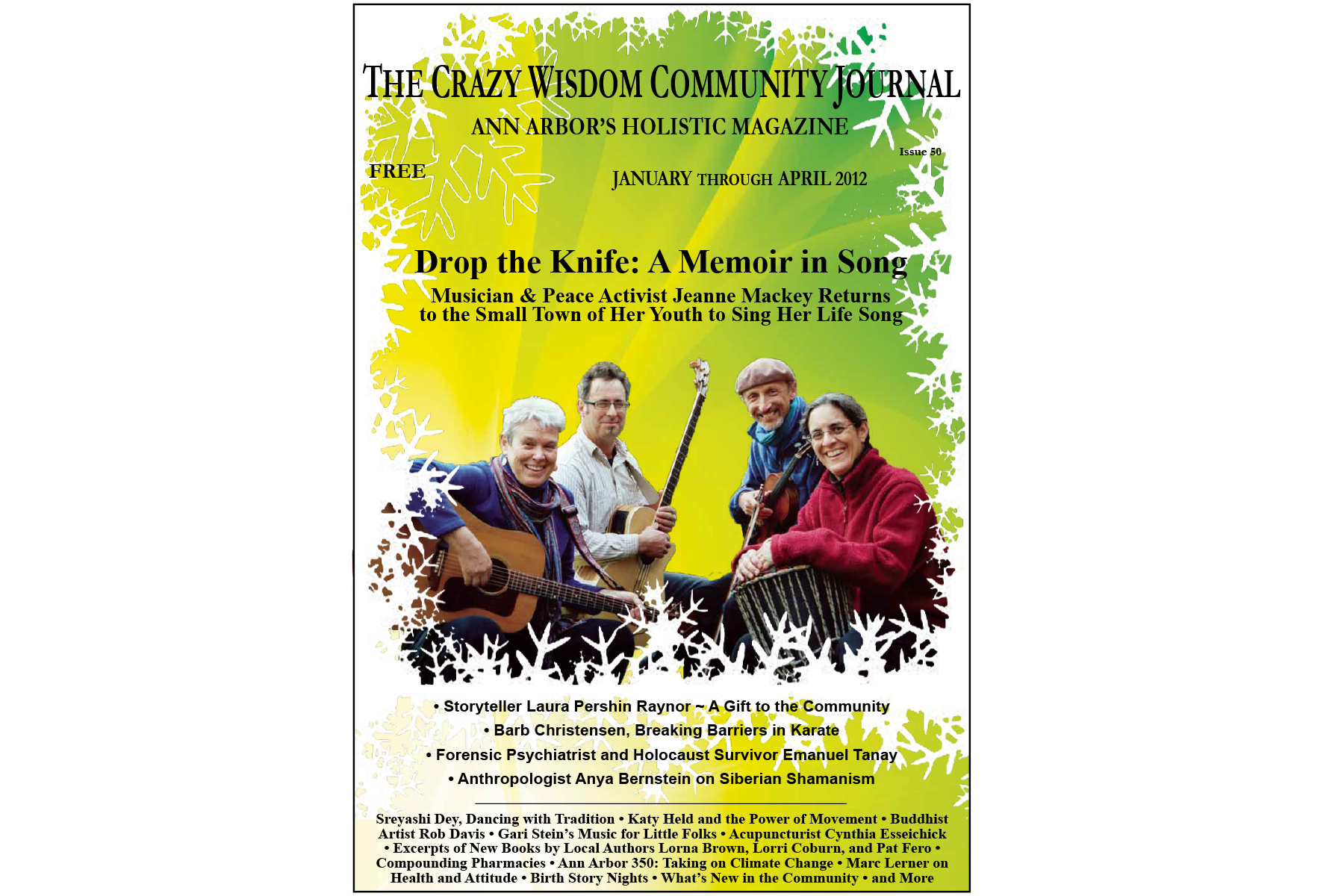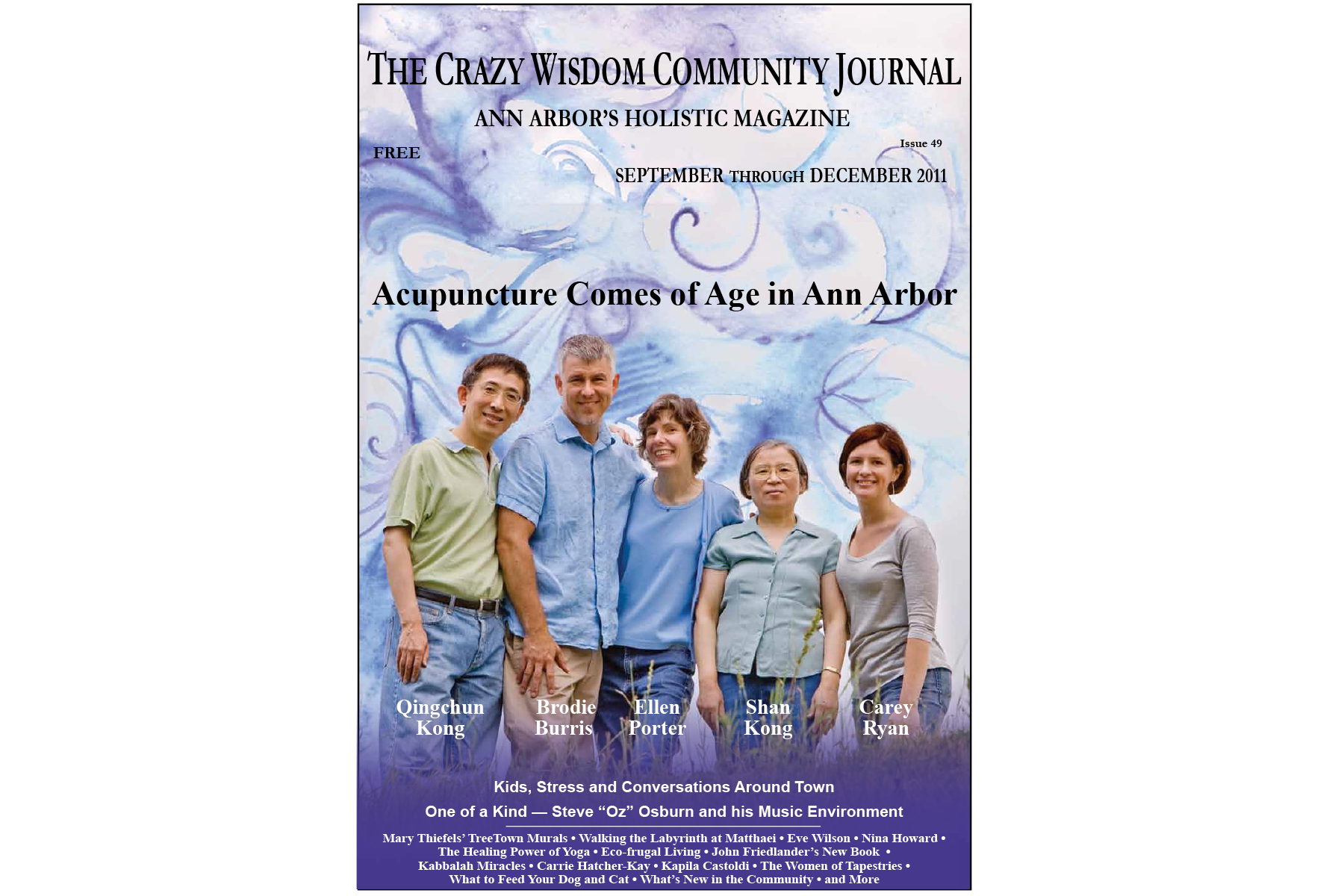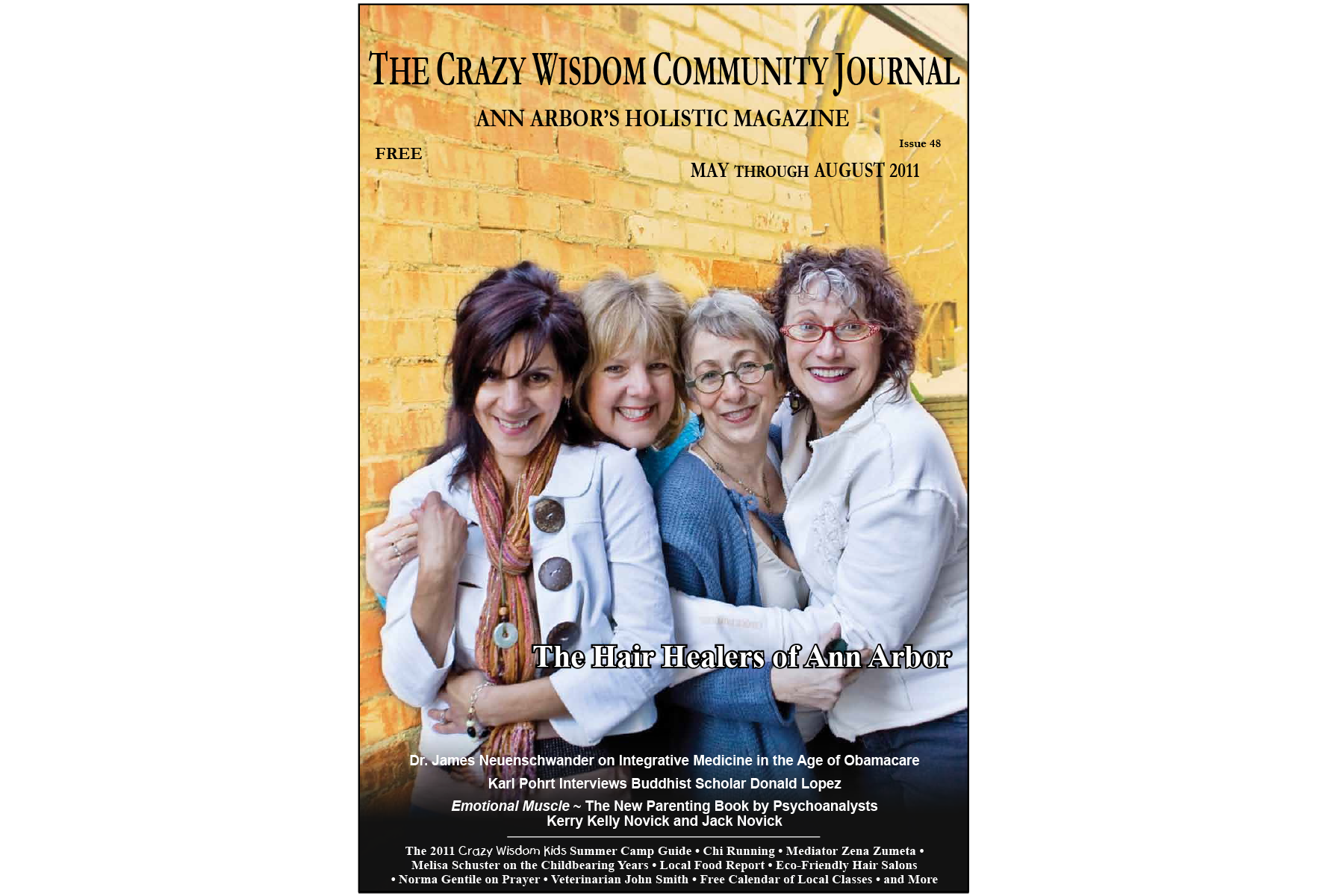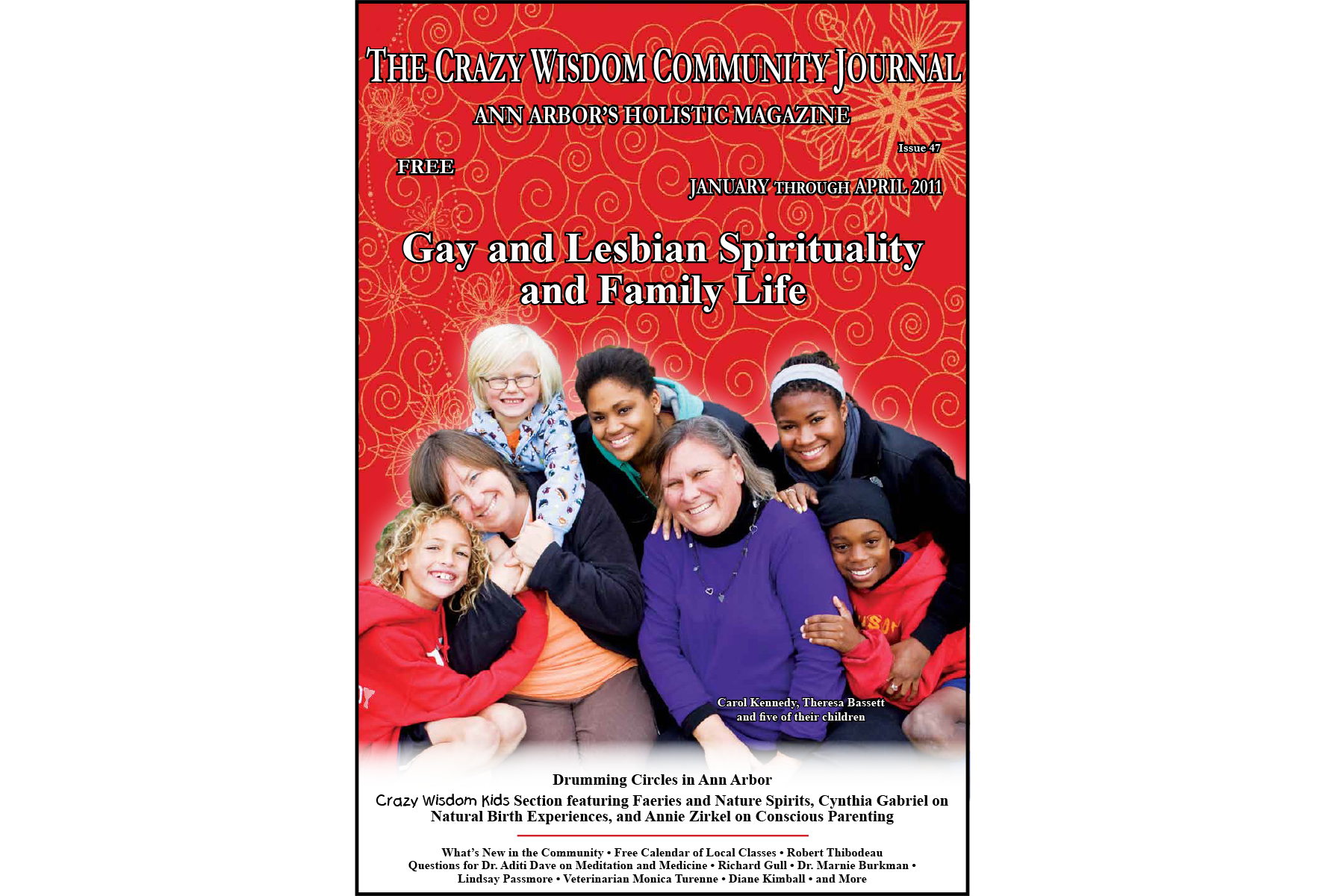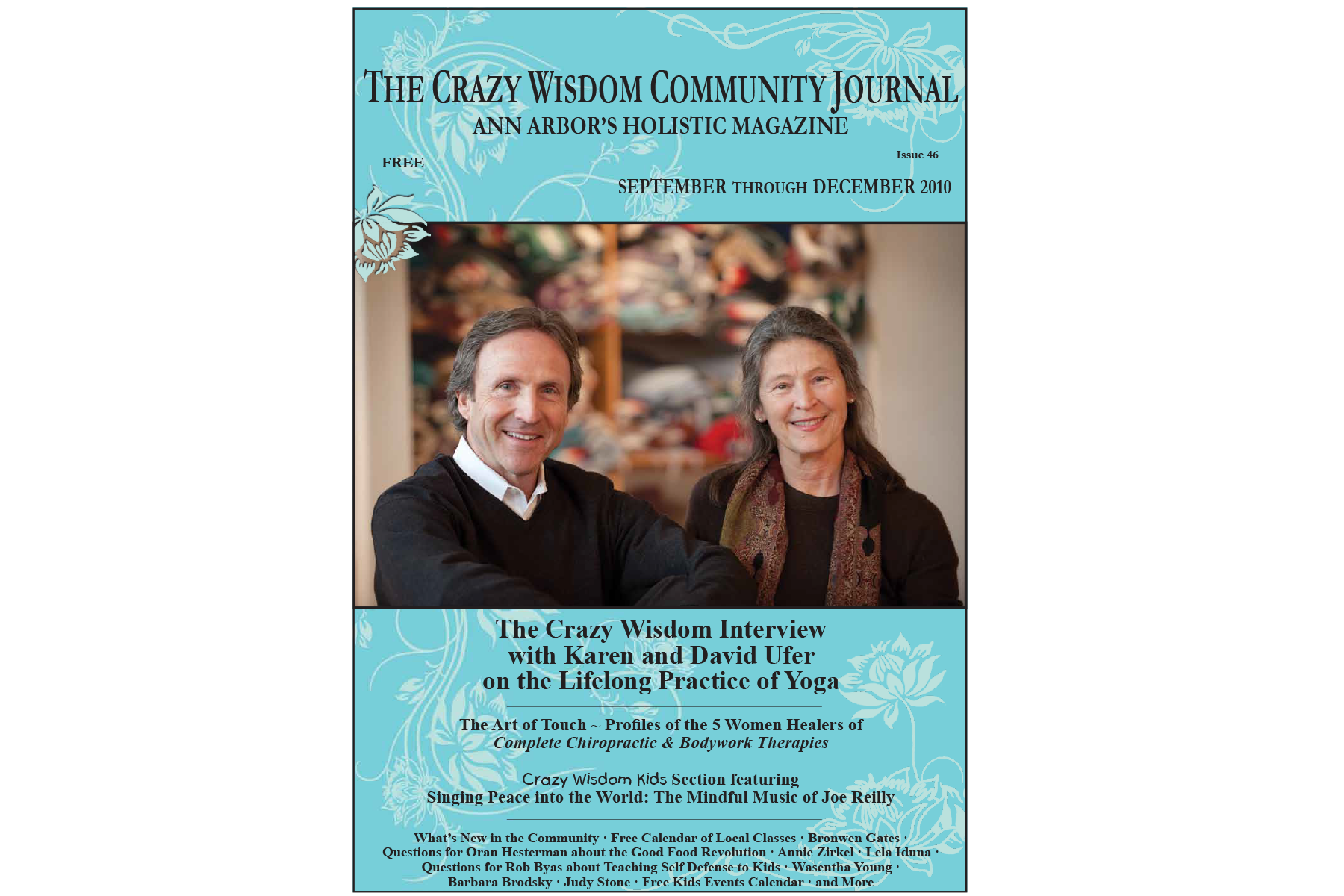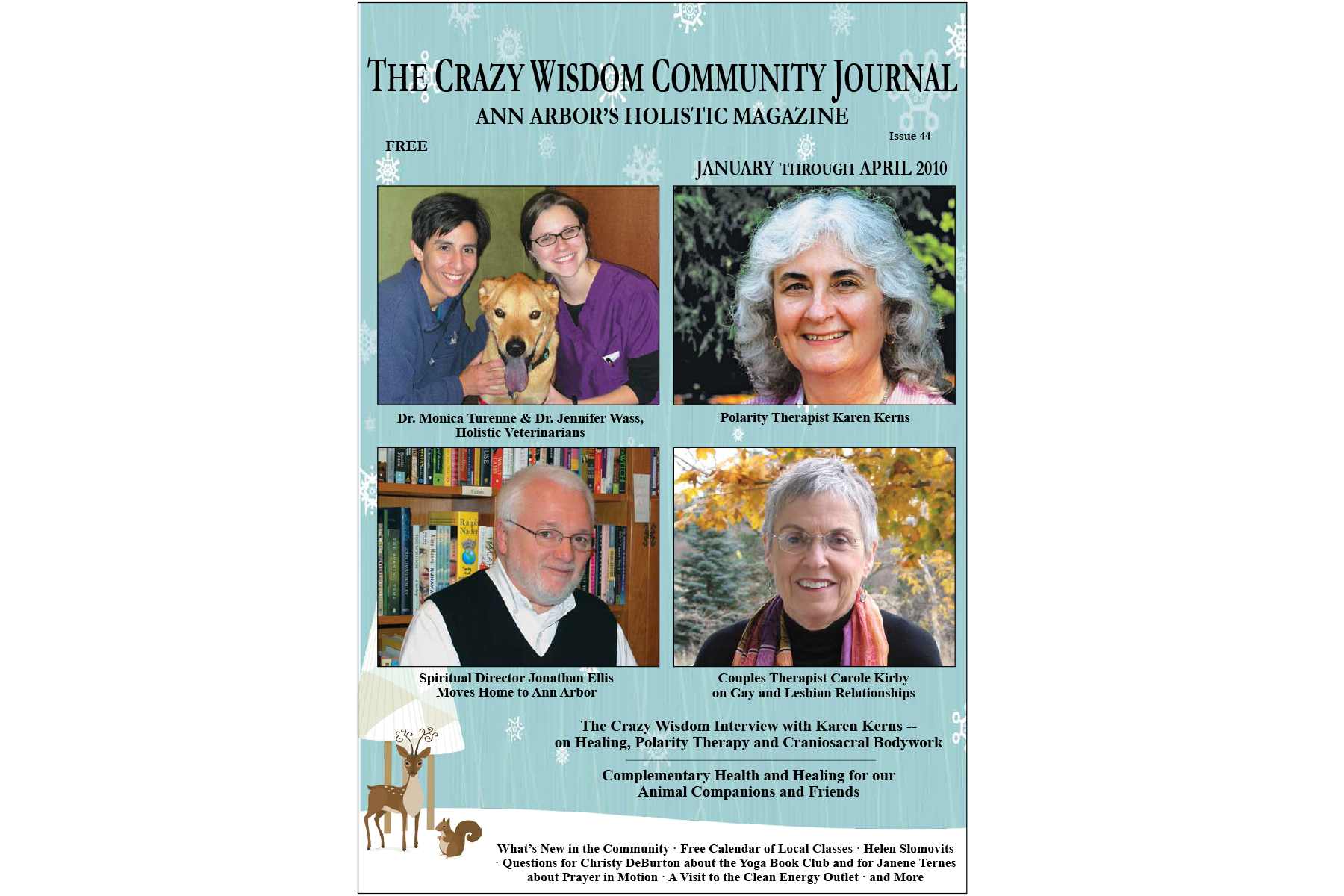I recently met with Danielle Groth and corresponded with Vicky Lovell, two of the co-founders of Angel Whispers Healing Center in Dexter. Angel Whispers aids in helping individuals and families in mind, body, and spirit. They are in the process of moving into a new space on Baker Road that will be home to an even larger collective for grief care, acupuncture, reiki, worship, and other healing modalities.
Out of My Comfort Zone with Brian O'Donnell and Linda Bender
Life is calling me out of the comfort zone of middle age to the forbidding territory of old age. Middle age isn’t exactly my comfort zone either. If I’m honest I’m still clinging to youthfulness.
Kindred Conversation: Joy Dettling, Life and Health Coach
Tears run down my cheeks. My right hand, resting on a hand cradle contraption, buzzes lightly. Life and health coach Joy Dettling asks me to continue speaking about my central concerns, as she monitors the correlating reactions on her laptop. “What’s bothering you?” she asked. “What are the blocks between you and your betterment?” With one deep aha moment after the next, I am surprised to be finding the words to express some of my most long-held emotional blocks and self-doubts. As I speak, the ZYTO EVOX hand cradle measures my reactions through the pulses in my fingertips and reports the levels on her screen. With a thumbs-up, Dettling assures me that, “We are on the right track.”
Community Acupuncture: A Synergy of Healing & Community: A Conversation with Evan Lebow-Wolf, Cheryl Wong & Kiersten DeWitt of Ann Arbor Community Acupuncture
Community acupuncture, on the other hand, offers a sustainable and fiscally sensible solution to treating as many people as efficiently and effectively as possible. Evan Lebow-Wolf, co-founder of Ann Arbor Community Acupuncture (AACA), told me briefly about the difference between community acupuncture and private acupuncture. When I asked him whether he feels like there is anything missing in the community acupuncture approach that is available in private acupuncture sessions, he replied with a firm and resolute “no.”
Psychedelic Medicines in Trauma Recovery
Life is hard and yes, terrible things can and do happen, oftentimes to people who do not deserve it. Denying trauma and trying to inspire people out of its impact, both individually and collectively, has been the go-to method of dealing with trauma for generations.
Out of My Comfort Zone: Stretching Out of My Comfort Zone
Generally speaking, my comfort zone is not small. I have lived in foreign countries, trekked in the Himalayas, paraglided off a 5,000 foot cliff, flown in teeny tiny planes over the Amazon rain forest, stood on my head on various mountain tops, and held a giant anaconda around my neck (that one was mostly for the photo op). But when asked to write an article about stepping out of my comfort zone, I immediately knew what I’d share. And it turns out I am not alone in this fear. In fact, it comes in at number two on the list of people’s biggest fears. It is of course, the fear of public speaking (in case you’re interested, fear of death is number one on the list).
Ann Arbor Healers: Indigo Forest and Chronic Pain Reduction
Beth Barbeau is a healer, and a teacher with 40+ years of midwifery and natural family health experience. Barbeau has recently added a new therapeutic device to her robust set of therapeutic options at Indigo Forest, her online and in-person business designed to help people of all ages achieve optimum health.
Ann Arbor Healers: Staunch Stress, Seal Serenity
By Marie Noelle Duquette
I hurt my leg in mid-September while running with my dog, Nala. The air was cool, autumn-fresh, and Nala and I were enjoying our evening walk. I felt so strong that I broke into a light jog, without stretching. I am 61 and not a runner.
About 50 yards into the run, I felt a pull behind my left knee. I slowed to a walk, thinking to myself, “There is no way that itty bitty burst of energy caused anything as serious as a sprain or heaven-forbid tear.” Still, my skin behind my knee was hot, the pain was real, and I quasi-limped home.
After wearing a brace on my knee for weeks, icing it daily, stretching it carefully, and getting an ultra-sound to rule out more serious causes, the pain behind my knee persisted. While researching therapies for leg injuries near Ann Arbor, I stumbled upon the Neurofitness Center website. Their website was convincing. I made an appointment to try everything they offered: Neurofeedback, the Salt Room, the Float Tank, and Cryotherapy.
My partner and I first went to Neurofitness to experience a Neurofeedback session and the Salt Room. Jack Lark greeted us upon arrival. Knowledgeable and engaging, he would help us navigate the different therapeutic experiences. Neurofeedback, he explained, was a therapy in which he would attach a couple of electrodes to my ear lobes and one at my temple. Next, I would put on a comfortable pair of headphones—the kind with soft padding that cover one’s entire ears. Then I would sit in a comfy chair and listen to a recording of meditative music infused with nature sounds such as birdsong, steady rain, and wind rustling through trees. The recording was enchanting. It was easy to close my eyes and give my mind over to what I was hearing. Periodically, the music would skip, like a less-annoying skip of a record that self-corrects and lasts only a second. The ambient recording draws one’s auditory focus—the skips are triggered anytime one’s mind wanders beyond the music and birdsong. At first, the skips happened frequently. Soon, my focus on the audio became steadier and the skips were less frequent. The Neurofeedback session was like yearning to hear a beloved, melodic voice that is almost beyond one’s hearing. I stilled my body and leaned into the strings, rain sticks, flute, waterfall, and windchimes. By the time the session ended, I was ready to book a weekly session, my relaxation was so complete. Lark told me that Neurofeedback was a form of practicing mindfulness in a way that required less effort and more receptivity. As one who struggles with keeping my attention in the here and now, it succeeded beyond my hopes.
If the Neurofeedback session was like yearning to hear a beloved, melodic voice the Salt Room was akin to sitting on a beach, inhaling fresh air. The Salt Room at Neurofitness is lit by infrared lights and is big enough for two people to sit in comfortably. The Himalayan salt is so deep on the floor that it looks like a remote beach of fine sand you can dig your toes into. Salt bricks are laid into the walls and a PVC pipe in the corner emits a burst of fine salt spray into the room every eleven seconds. Upon entering, I removed my shoes, pushed back in one of the zero-gravity chairs, and closed my eyes to focus on my breathing. I quickly fell into a meditative state and the half-hour session slipped away unnoticed.
The next day we returned to float. We had both enjoyed float tanks in the past and were familiar with the drill: enter the room, shower, enter the float tank, and either close the lid, if you are in the egg or turn out the lights if you are in the non-covered tank. Music plays if you are in the open tank, or you can float in absolute silence in the egg. In both tanks, you float in darkness that envelops you so completely that you cannot see the walls, the water, or your own wrist in front of your face. The complete lack of visual stimulation enhances one’s sense of touch so that the salt water, which holds you up without effort, feels like a cradle, the warm water giving a sense of being in a womb—a protected space created for your own nourishment and rest. A gentle recorded voice interrupts your reverie when the hour is drawing to an end. After floating, the colors and lights and sounds outside are more vivid and distinct. There is a newness to the world as if your very eyes have been cleansed—your senses reset.
On Monday, I returned to Neurofitness for the scariest offering: Cryotherapy: standing, with minimal protective outerwear, in a sub-zero chamber for three minutes. Cryotherapy has been used for decades in Europe and Asia to promote athletic recovery. From the Neurofitness website, I read, “The use of liquid nitrogen in a safe and controlled environment provides a gentle but significant amount of cold exposure. The extreme cold stimulates the skin’s temperature receptors to activate the nervous, immune, and endocrine systems, leading to a reduction in inflammation and pain (hey athletes—this means quicker recovery!), elevating mood, and increasing energy. Clients often tell us they feel relief of symptoms including muscle soreness, arthritis, chronic pain, and inflammation.”
Lark, our guide at Neurofitness, was particularly helpful for my Cryotherapy session. He explained that the sub-zero temperatures would not feel quite as cold as I might expect, because it was a dry cold, not the wet cold that we know from Michigan winters. The Cryotherapy chamber looks a bit like a blue hexagon-shaped phone booth. The floor of the chamber is adjustable by adding soft, uniform pads that fit perfectly in the chamber’s footprint, so that no matter your height, your head is not enclosed in the chamber. Lark gave me special socks, shoes, gloves, and a robe and excused himself until I was ready. When he returned, he assured me that I was in control. Once in the chamber I could opt to remove the robe and at any time, or I could ask him to let me out. Still, he urged me to embrace the experience and try not to focus on how cold I felt. “That way, you’ll get the most out of doing it,” he said.
Once inside the chamber, I was not brave enough to drop my robe. The cold was not as sharp as I expected, but neither was it as comfortable as the other therapies had been. I endured the entire three minutes, trying to focus on the benefits. I emerged feeling like a victor. Immediately after Cryotherapy, I felt hungry, and then tired. As the evening wore on, and the new day dawned, I noticed that the pain in my leg was considerably subdued. I could still feel a dull ache where the sharp pain had been, but that continued to lessen in the days ahead. It has been two weeks since I braved the sub-zero Cryochamber and my leg has yet to hurt at the level of pain I endured before the experience. In fact, I’ve not worn my knee brace once since the big freeze. I’m going back for another session today, to continue the full healing of my leg, and to see if Cryotherapy will help heal two toes that I bruised badly yesterday when I wrapped them around a square, wooden chair leg.
Neurofitness is an extremely clean facility. Lark is a helpful guide whose sense of optimism and wonder is infectious. The entire environment underscores that restorative healing and stress-relief is more than a nice occasional treat. It is something we need as much as medications, fresh food, and deep sleep. The therapies offered at Neurofitness act like boosters that enhance other healing practices. They helped me find a place beyond the trauma of life in which restoration of my body, mind, and spirit, is both inviting and efficient.
In my first visit, I commented to Lark that I was pleased that Health Savings Account and Flexible Savings Account dollars offered by many insurance companies could be used for all their therapies. He said, “Of course! We are a health care center.” Indeed.
Neurofitness is located at 6360 Jackson Road Suite A in Ann Arbor. To learn more or make an appointment, call (734) 206-2012 or visit them online at https://neurofitcenter.com.
Related Content:
Healer of Ann Arbor: When is a Massage Not a Massage?
Lisa Teets is a local Bowenwork healer, Tai Chi instructor, and fan of wellness modalities in general. I met her in a local Tai Chi class several years ago, and we hit it off. As many of us struggle with stress into year three of the pandemic, I wanted to learn more about her primary modality—Bowenwork—to ask what makes it different from a massage and how people might know if they would benefit from trying it.
5 questions for 3 Local Sound Healers
Short interviews with three local sound healers.
Healers of Ann Arbor: Mindful Awakenings with Julie Woodward
Through the pandemic, many people have reached out to healers and wellness teachers for self-care techniques and help through crisis. One such teacher, Julie Woodward of Mindful Awakenings, seemingly does it all. She teaches yoga for resilience, mindfulness meditation, and leads nature immersion hikes that help us all re-anchor ourselves in the present moment and recharge through times of stress.
Linda Diane Feldt, Beloved Ann Arbor Healer, the Very Embodiment of Crazy Wisdom in the Community
The death of Linda Diane Feldt, at 62, on November 17th came as a shock to Ann Arbor’s holistic subcultures. There was an immediate outpouring on Facebook of heartsickness and grief, a sense of being stunned that someone so integral, so key, could be gone in a flash. For those who didn’t know her, or never came across her, it is hard to put into words the depth and range of her presence and her impact. We have had a holistic alternative healer/genius in our midst, for decades, and we all knew she was special, but took for granted that she would always be here, so no need to pay extra special attention to her gifts, to her very existence in our community. Though, as she said often in recent times, take nothing for granted.
Back to Basics Health with Julie Johnson
Imagine receiving results from an air quality and blood test showing that your home needs remediation—and so does your body. There were astronomical levels of mold and fungus in your blood. You suffered from pneumonia and had so many x-rays taken that you almost glowed in the dark. The medications prescribed were barely treating the symptoms but were further depleting your already near-extinct immune system. Your doctors finally admit that they have no effective options for your condition; their final suggestion was to wait and see if your body began to win the fight on its own.
Healers of Ann Arbor
You can try a new type of massage or read a chiropractor’s online reviews, but how do you really know when a healing modality is right for you? This new column, from tech and wellness journalist and meditation coach Laura K. Cowan goes in depth with local healers to give you a behind the scenes look at what they really do to help people relax and heal.
A Conversation with Erin Stohl and Dan DeSena about Somatic-Oriented Psychotherapies
An Ann Arbor couple, Erin Stohl and Dan DeSena, has found a place within the local somatic psychotherapy community. I sat down with Stohl and DeSena, pre-pandemic, to learn about how they came to somatic psychotherapy, and how their experiences as somatic psychotherapists have impacted their relationship. Stohl and DeSena are both seeing patients via video chat and doing appointments by phone.
Roxane Chan--A Warrior’s Path
By Debbie Wollard
“Look at every path closely and deliberately. Try it as many times as you think necessary. Then ask yourself, and yourself alone… Does this path have a heart? If it does, the path is good. If it doesn’t, it is of no use.”
—Carlos Castaneda
Dr. Roxane Chan has been a nurse all of her career. She knew that she wanted to be a nurse early on, and even though, as she says, she was naïve and idealistic, somehow she also knew that nursing was a key part of her emotional and spiritual journey. She sees her role as nurse as a vocation, as a piece of who she is, rather than merely what she does for a living.
Chan grew up on the south side of Chicago in a family with a mixture of joys and dysfunction. “In my young life, with the struggles in my family, I didn’t see a clear path to happiness and wellness, until I discovered nursing. Somehow I knew that nursing was going to be my path from dysfunction to health.”
Chan has strong Italian roots and a deep faith shaped by her upbringing and broadened by her life experiences. She tells the stories of how two key women in her life set her on a spiritual and an intellectual path, and helped her link head and heart in all that she does. Her Aunt Shirley gave her books about strong women and encouraged her to read and to learn, giving her a very different message than she received from her teachers and parents. Neither her high school teachers nor her parents expected her to go to college, nor did they encourage her. She sent her own applications off and surprised them all when she was accepted into Northern Illinois University. Four years later, she received her bachelors degree in nursing, and again surprised everyone when she graduated with honors. “My parents were continually startled throughout my graduation ceremony, because I kept standing up as they called my name for honors. In contrast, they were very excited that I was in the NIU Marching Band, and told their friends with pride of that achievement.” Submitting her own college applications, and following through on her acceptance into college by going, was the first time that Chan can remember advocating for herself and charting a course with intention and conviction.
The second woman of note in Chan’s life was her neighbor Angie, who shared her spiritual practices openly, and showed Chan for the first time that there were women priests. Although they didn’t call themselves that, she recognized Angie as a spiritual teacher and watched her carefully. Angie burned palms and said prayers in such a way that it helped Chan begin to create her own rituals. She was raised in the Catholic church and was drawn to the practices of that faith that gave her peace and a firm foundation.
Read related article: The Crazy Wisdom Interview with Dr. Molly McMullen-Laird and Dr. Quentin McMullen, Founders of the Rudolf Steiner Health Center, on Anthroposophic Medicine
She went to public school, but for first communion and confirmation classes the public school students joined the Catholic School preparations. The Catholic School children all wrote “JMJ” at the end of their names on the top of their papers (for Jesus, Mary, and Joseph). Chan wanted to write these initials too, but they weren’t allowed to do so at the public school. She used to say the rosary every night before bed. “We learned that if you fell asleep before you finished the rosary prayer, your guardian angel would finish it. That was magical to me, and I believed it.” Her experience at the Catholic School was so compelling that she wanted to be there every day, to be with the nuns.
As a grown woman, Chan continues to be a woman of ritual—she knows how to set a sacred space and how to hold that space. When I asked her about this, she said that it started at a young age. She would go to church for the special prayers, and she loved to spend time with the nuns. She remembers only kindness from the nuns, and their calm, patient demeanor. These women were the antithesis of what she had at home, and she found comfort and peace there. She told of how she would soothe
herself by reciting the rosary, and how at a young age she would pray for others using the rosary. While Catholicism is not the faith that she practices now, Mary and the Rosary are still important parts of her spirituality.
Chan’s journey in nursing has always included care for the marginalized populations and care for the caregivers themselves, and she has committed her life to working for social change. Early in Chan’s career she was the Nurse Manager at the County Hospital in East Los Angeles, and she is proud to have been part of creating an award-winning unit in the face of low/no funding and minimal basic necessities (no clean water to drink, no air conditioning in the hottest months). Her work with this unit transformed them into a team that was called on to train other teams across the country. “It all started with a large piece of butcher paper hung on the wall with one question: What would you like to learn?” Chan said. “I was thinking they would answer with skills they wanted to learn, but the nurses took the question broader and wrote all kinds of things on this large piece of paper.” Chan went on to say, “Once this happened, and I saw that there was a lot of valuable information written down, they began to trust me, and we began to listen to each other and talk to each other. No one had ever asked them for their thoughts and ideas before, and I opened the flood gates. Talking and listening to each other matters!”
Chan has continued to broaden her “lane” from patient care, to nurse care, to teaching nurses about advocating for patients and being present to patients in a way that only nurses have the opportunity for and considering nursing as a vocation with breadth. She did all of this through her work as an Assistant Professor at Michigan State University in the College of Nursing. She tried to convey her experiences in such a way that the students who were training to become nurses didn’t miss the beauty, complexity, and importance of their role as caregiver. “As nurses we get to be in situations that are very intimate with patients when it comes to wound care and care for their bodies and our presence in their time of need.” Chan got misty-eyed as she tried to convey this complex idea of presence and continued by saying, “I could sit for days and days and think of one beautiful, powerful, meaningful exchange after another. It has been such a privilege to be with people in this way. In our medical model today, the newest nurses could miss this beauty, and I don’t want them to miss it—to overlook the things that remind us that we are all connected.”
After six years at MSU, Chan has finished her time in this role. In reflecting on the things that she is really proud of accomplishing at MSU, she cites examples like how she used innovative and creative methods to teach integral processes for patient care and the medical team approach. She started a holistic student retreat that gave the students the building blocks for not only patient care, but key ingredients and encouragement for self-care. She used her love of, and extensive experience with, drumming circles to teach the students the “Team Steps” process for calling out when they recognize that something isn’t going right in a patient care process.
The drumming circle gives them practice in making “a big noise stop and using their own voice to name what they see is happening.” In a drumming circle, even though the students felt silly sometimes, she had them all (30 plus students at a time) on drums, drumming together, making a big noise and then one by one, they made a grand gesture with their arms or their vocal voice to make the sounds stop. Then, to get the sound restarted they shared a rhythm on their drum that they have made up (representing their own voice), everyone repeats that rhythm before continuing around the circle, giving each student practice to stop the loud noise and start with their own “voice” (drum). Because the students mentioned her name repeatedly, it peaked the Dean’s interest enough to seek out Roxane and ask about her creative teaching methods. This gave Chan comfort and lifts her heart when reflecting on her time at MSU. It is confirmation that the students were understanding her message. She has been glad to be a voice in the MSU program. She has been told that she is “too creative” on more than one occasion. Chan takes that as a compliment.
As she contemplates this time of transition, Chan feels a new wave of work rising, which she calls “Warrior Nurses.” She doesn’t see this as a training, but more of a movement—a movement that, in her minds-eye, has thousands of nurses wearing Warrior Nurses T-shirts and showing fierce compassion for themselves, their patients, their fellow nurses, and society as a whole.
In the workplace, a Warrior Nurse would take the time that they need to eat, go to the bathroom (there are many circumstances where nurses go long periods of time without ever relieving themselves), and the time needed to be present with each patient—fully present. Warrior Nurses would meet difficult circumstances with compassion and be present to themselves and others more fully. “Holding a space of peace is much harder than war or conflict.” Chan is a Mindfulness Self Compassion (MSC) trainer and sees this as key to not only caring for patients, but caring for ourselves. “Acceptance, or meeting people where they are, can only happen because I can meet myself where I am.”
Read related Article: Expanding the Scope: First-Year Medical Students at U-M Shadow CAM Practitioners in the Community
Chan says that “the connections of past experiences with current moments are often surprising. Seemingly random opportunities come back to be meaningful in a current experience.” Navigating transition times takes a lot of energy when done with integrity and intention. She is opting to, as she said, “Go back to the building block skills of first things first” and ask herself the question,“What do I need to do right now?” over and over again.
Chan marvels at all of her years of nursing care and at her evolution as a nurse, mother, teacher, mentor, companion, and sponsor. A clear path doesn’t necessarily mean a direct path. In Dr. Roxane Chan’s life, the only clear path was in nursing, which helped her move from dysfunction to wellness, from the shifting sands of a life in an unstable home to the foundation-building experiences from which she will launch into her next endeavor. She is a Warrior Nurse on a clear path to changing the world one encounter at a time.
Roxane Raffin Chan, PhD, RN, AHN-BC is currently working at Cristo Rey Community Organization as program director and is a member of an eight-person CREDO faculty team providing wellness conferences for Episcopal clergy through the Episcopal Church Pension Group. Chan also maintains her own practice, Chan Body Energy, LLC, where she works teaching mindfulness and self-compassion workshops with individuals and groups in the community. Find out more about Dr. Roxane Chan, and her offerings, at chanbodyenergy.com
Related Articles:
Our Western Neighbors
Although Jackson has not traditionally been known for its spiritual community, it is a quickly growing region with a bright future ahead and many new opportunities blossoming on the horizon.
Hands on Heart Healing with Julie Kouyate
Several years ago I was walking through the U-M Diag one warm summer evening and stumbled upon swathes of barefoot dancers undulating to the rhythms and harmonies of a large drumming crew. I was in awe of these powerful dancers and drummers, and the ways they all seemed to harmonize with joy, pleasure, and sincere effort that flowed from their hearts and was expressed through their limbs.
Our Southern Neighbors: Holistic Practitioners in Lenawee County
While Ann Arbor may be the center of holistic living in southeastern Michigan, the wave of conscious living has rolled across the state. A major area of growth for conscious living practitioners and educators can be found in the heart of Lenawee County. Just a short journey south and west of Ann Arbor you can visit the quaint town of Tecumseh with its many antique and fine gift shops. A little farther south and you’ll find the historic downtown of Adrian, which has been going through a time of redevelopment. Both towns, and many more surrounding them, are finding new growth, development, and interest in holistic living.
Horses Have Changed My LIfe
Horses have a sentient nature. They have a wisdom that transcends what we humans can understand. One thing that they have taught me, over and over again, is to be aware of and listen to their plan. When the plan they suggest to me differs than what I had in mind, I default to their wisdom and knowledge.

















